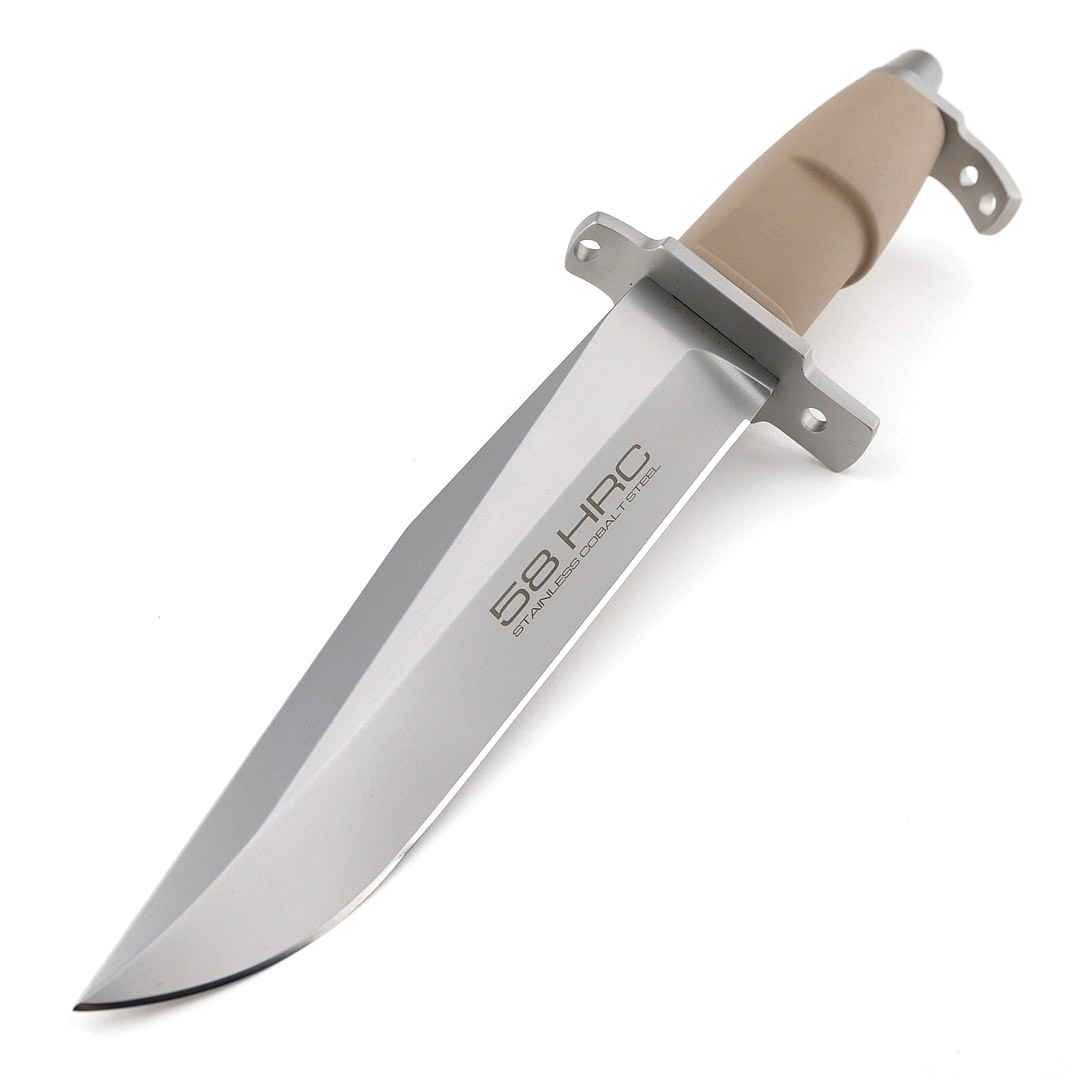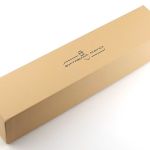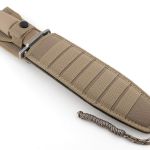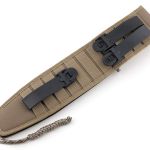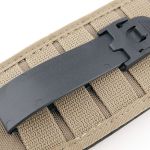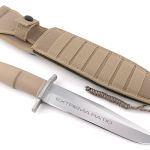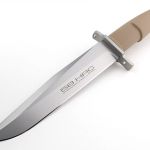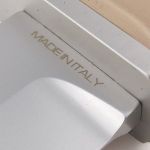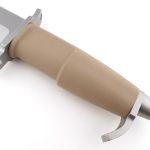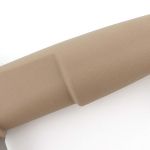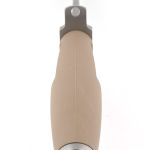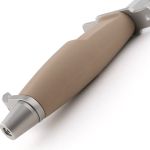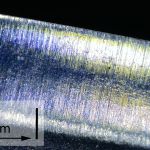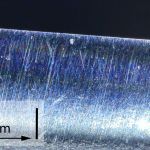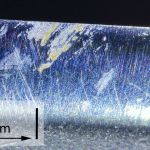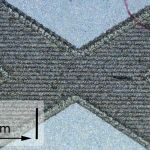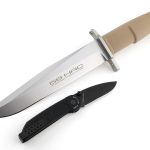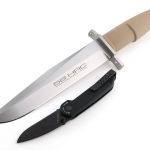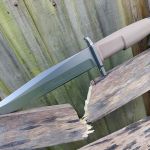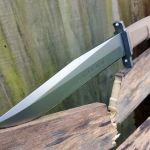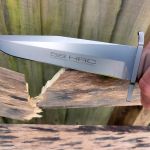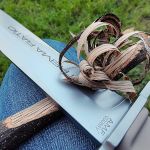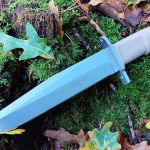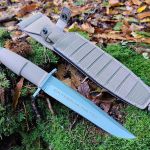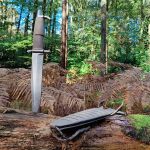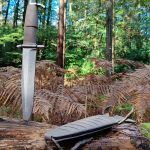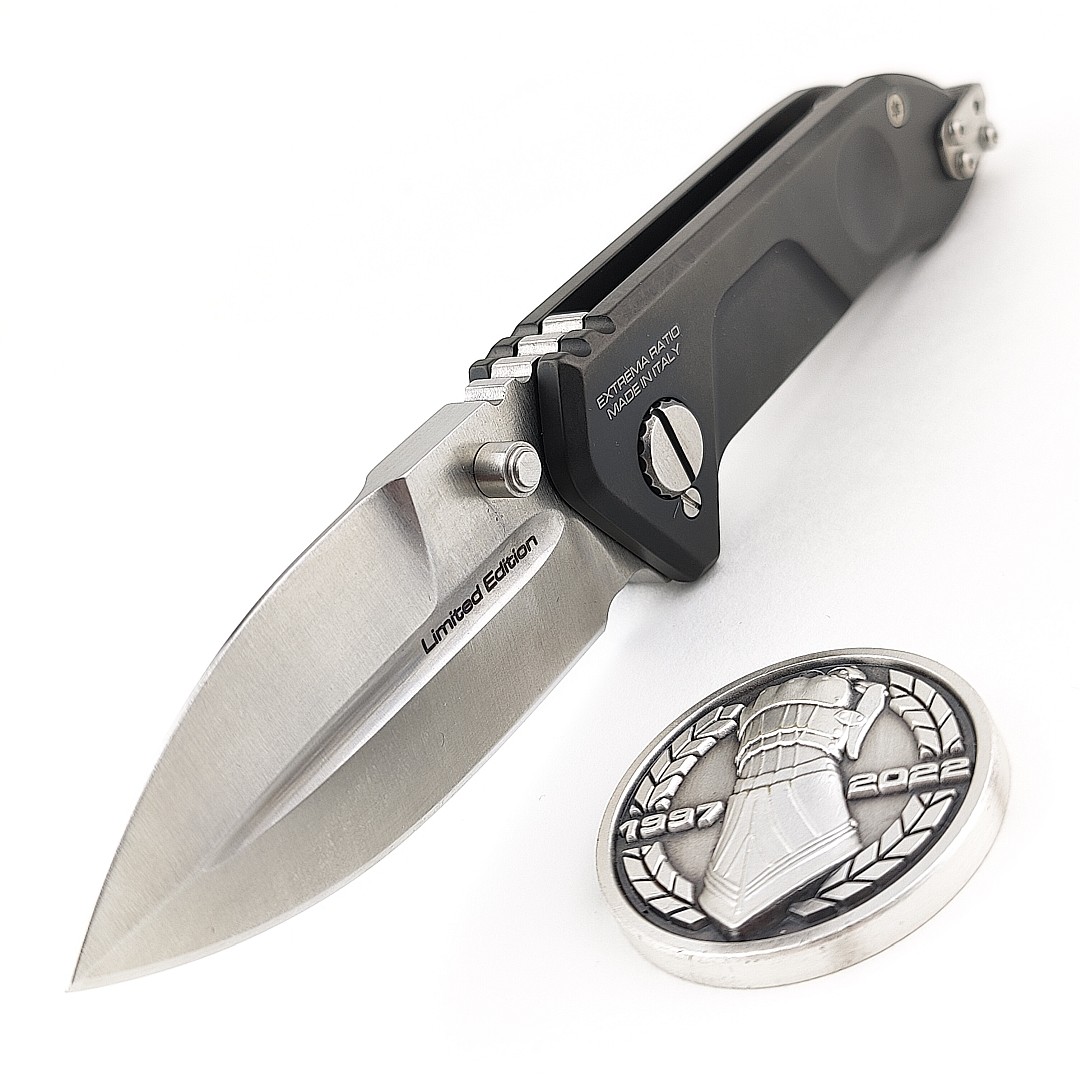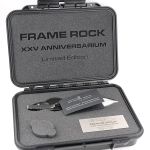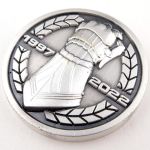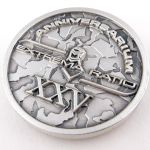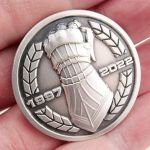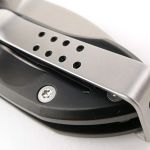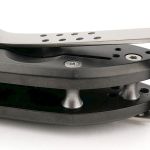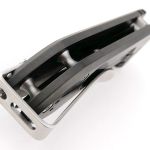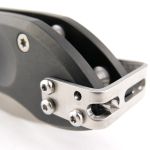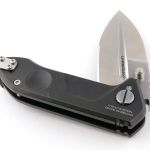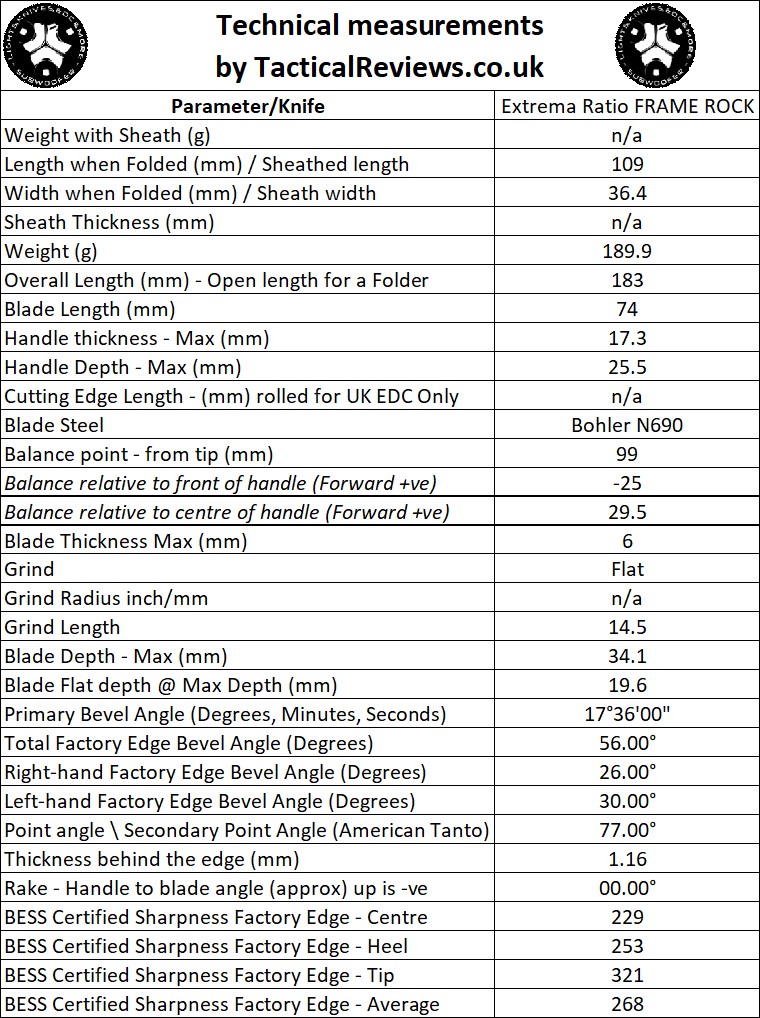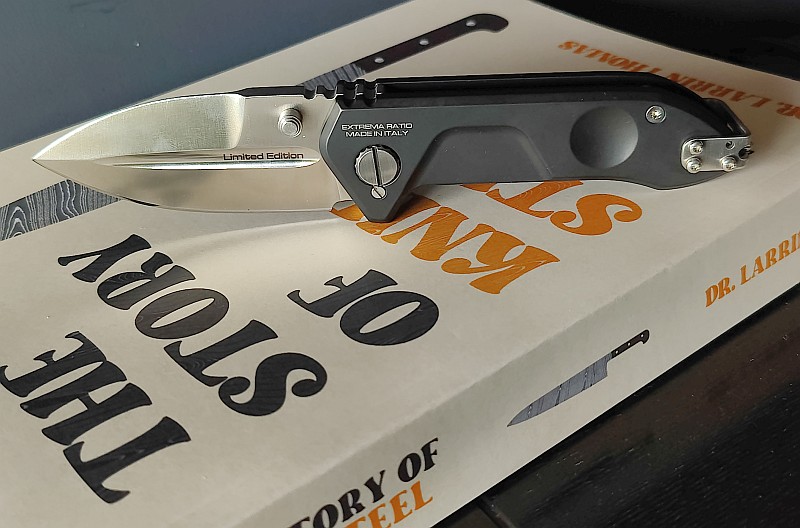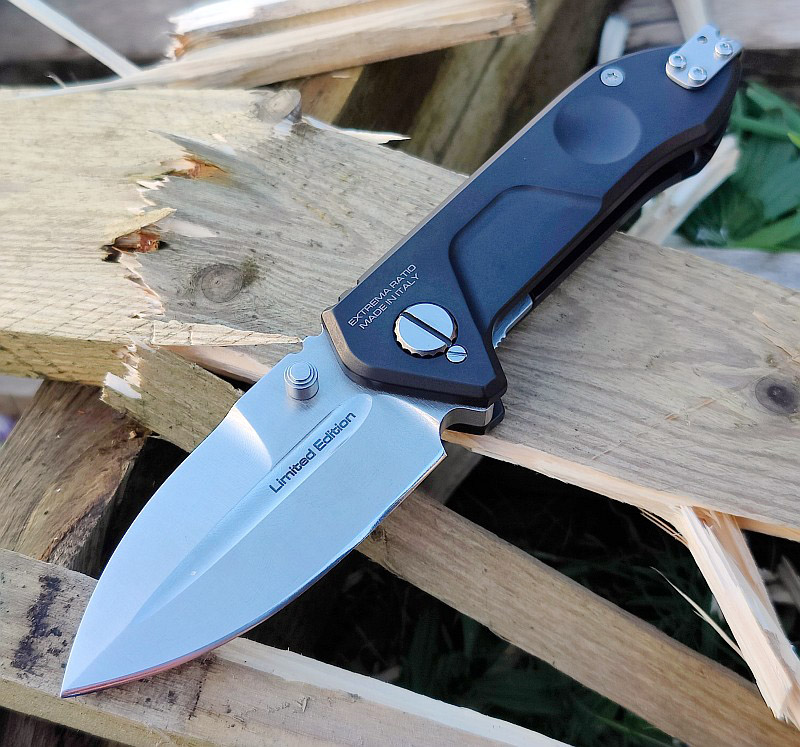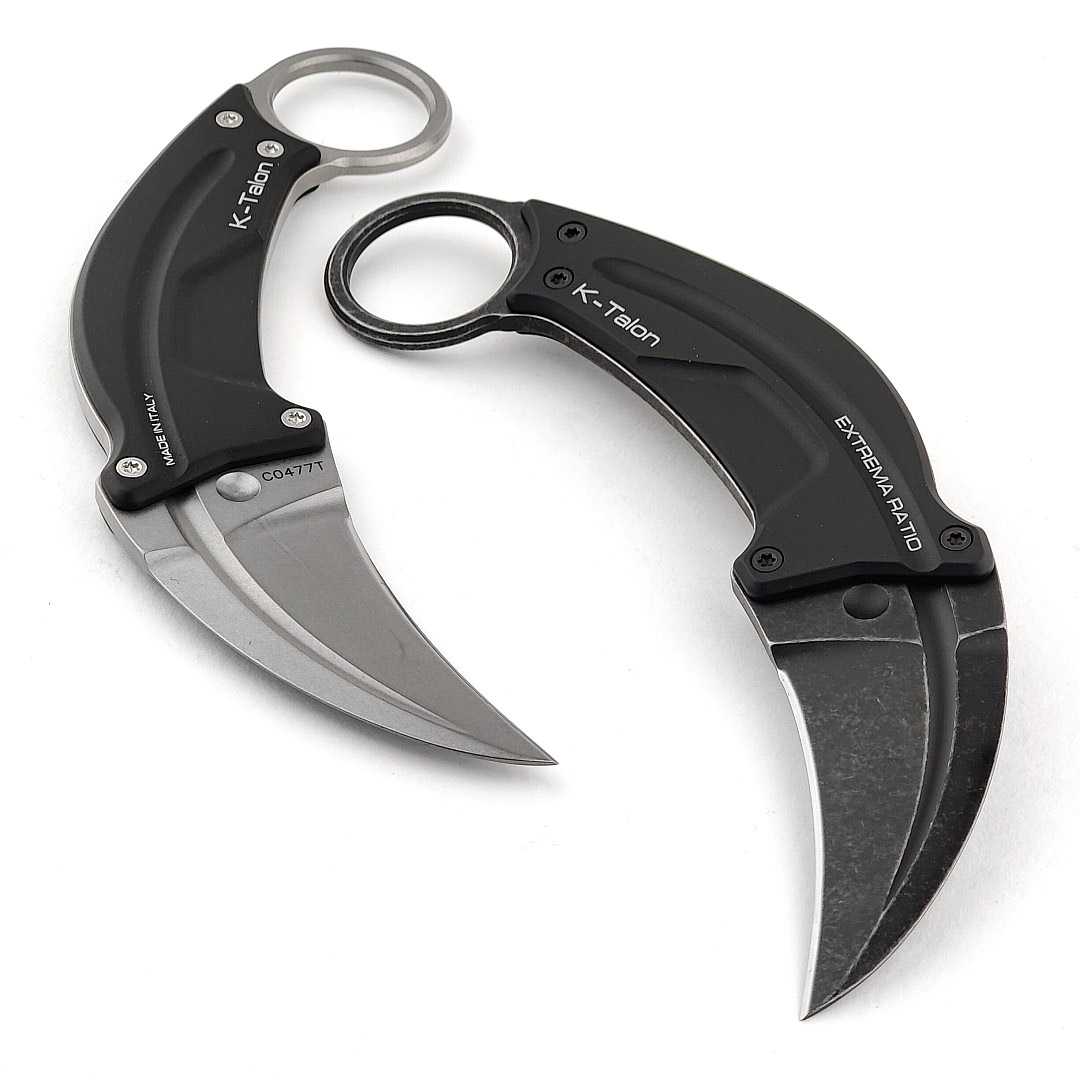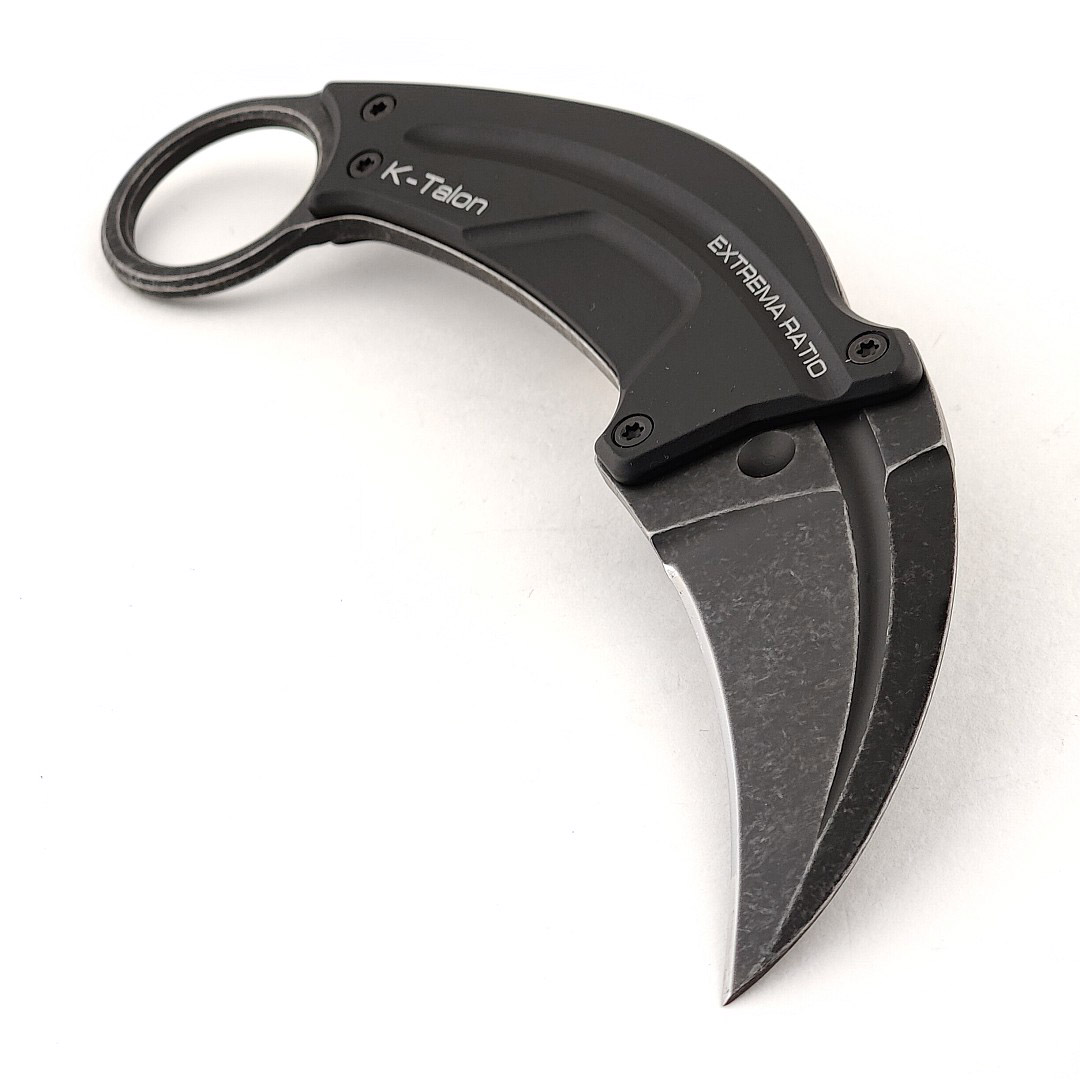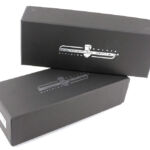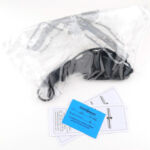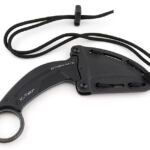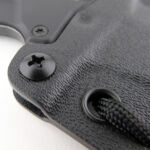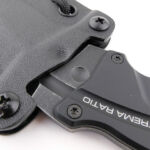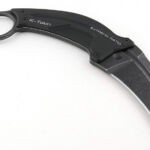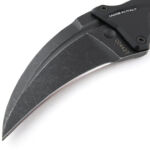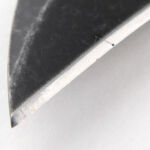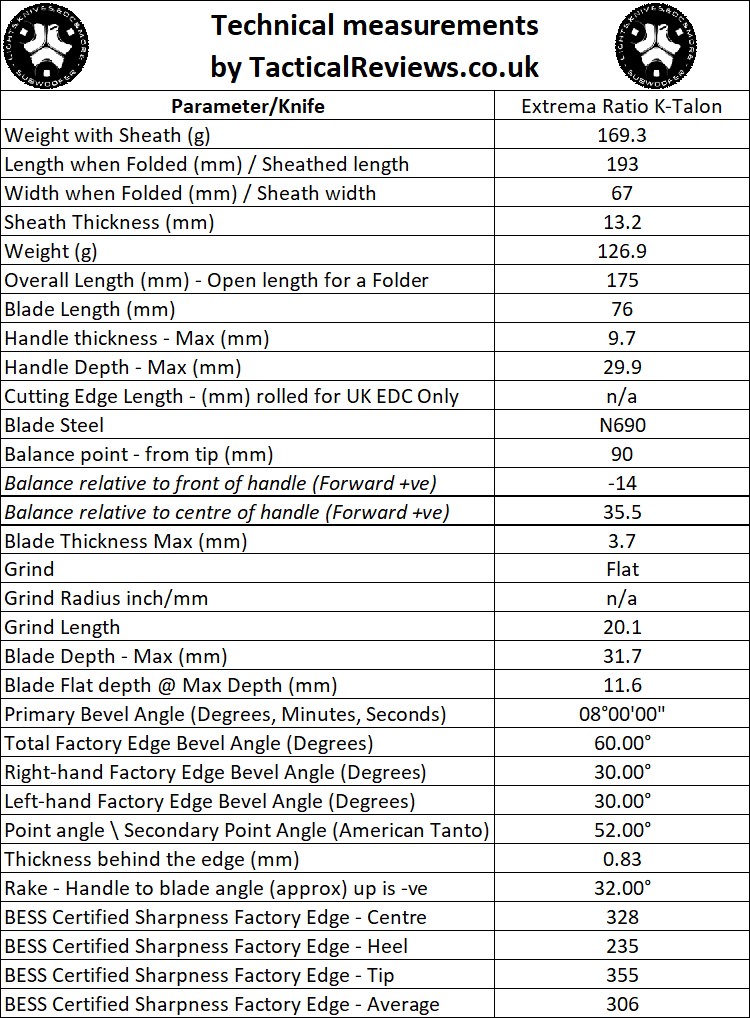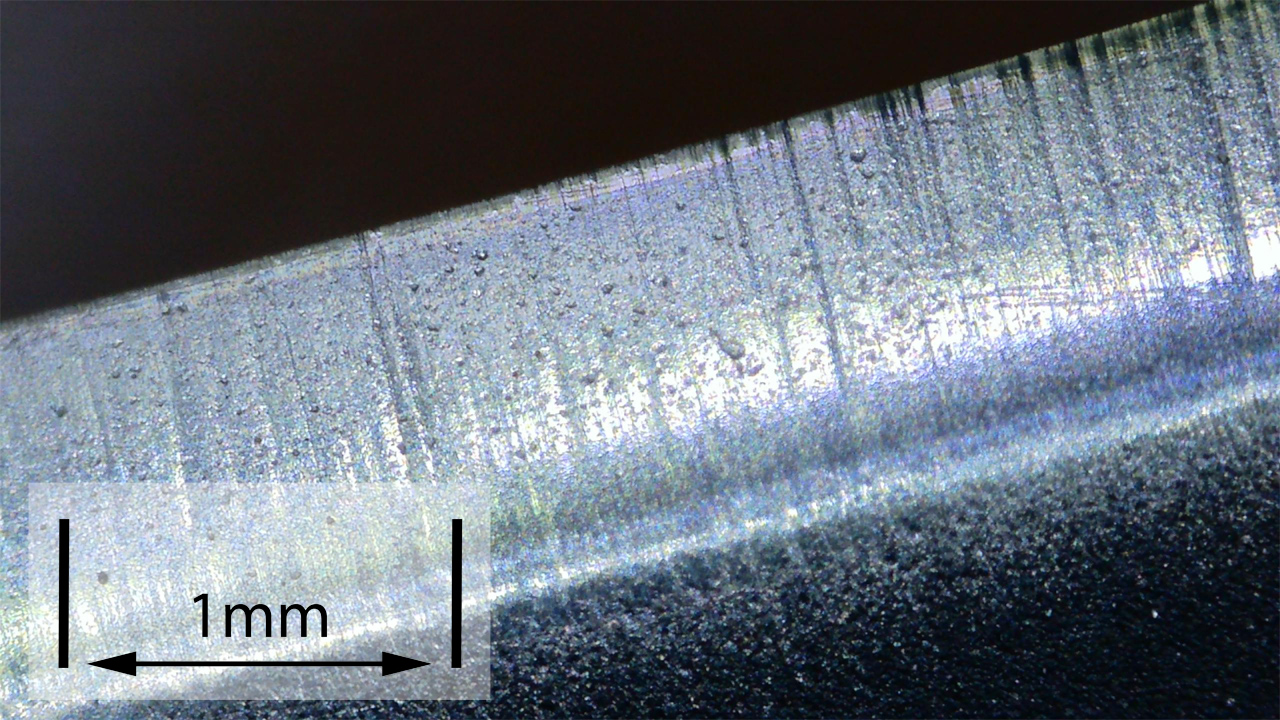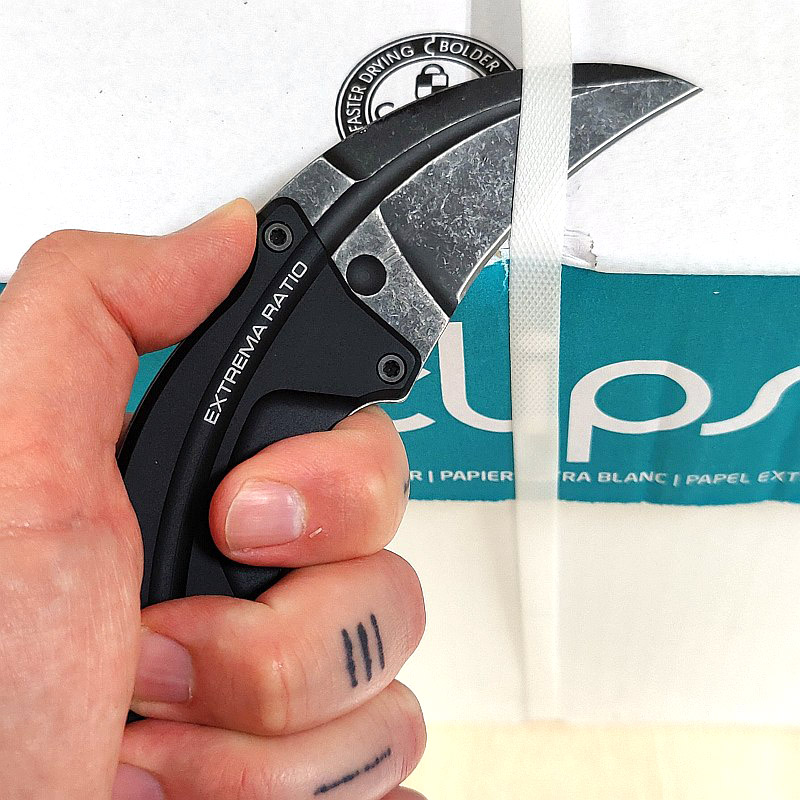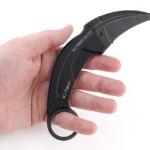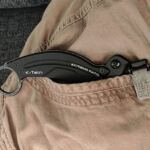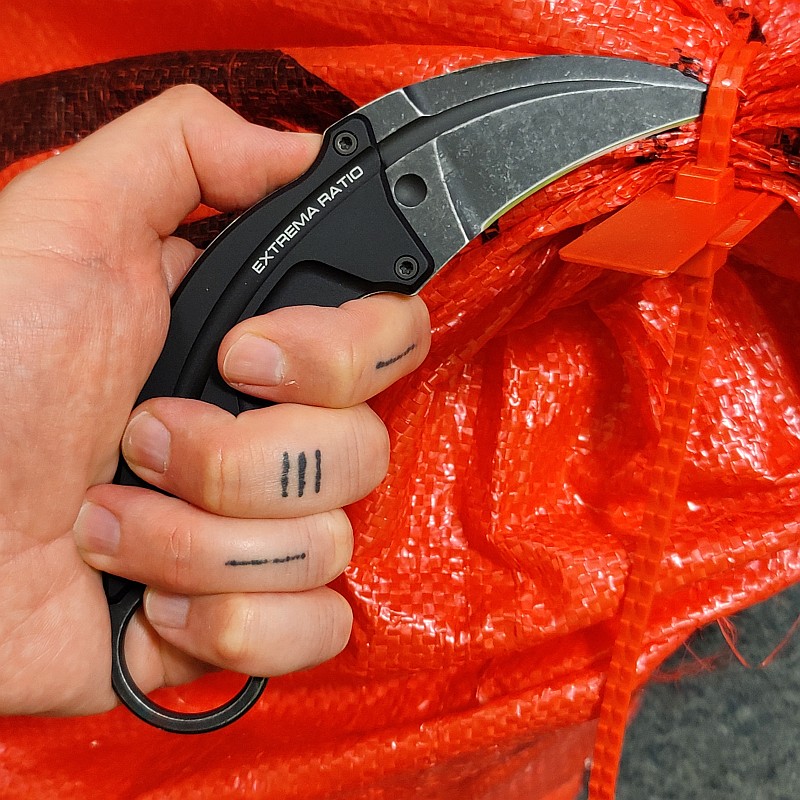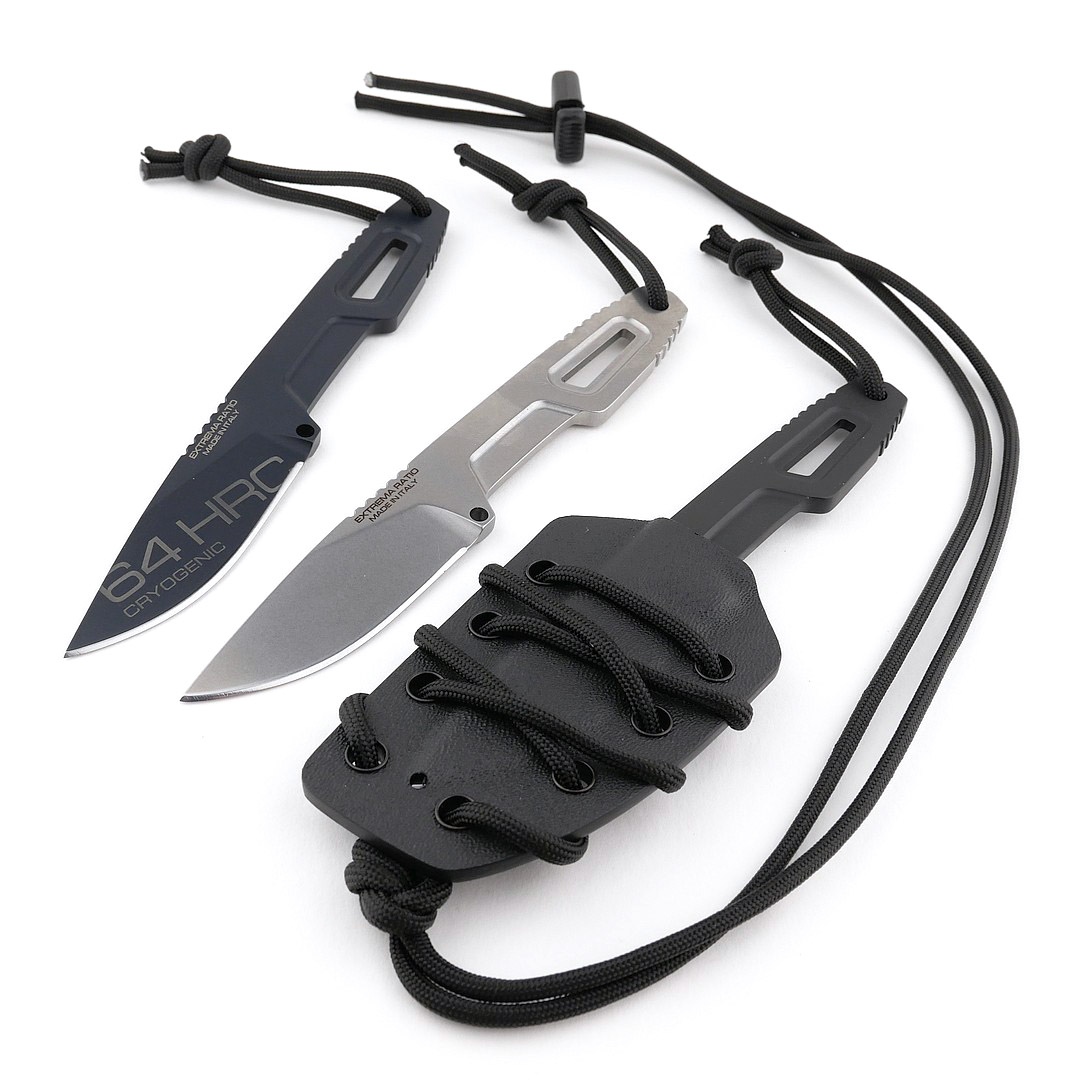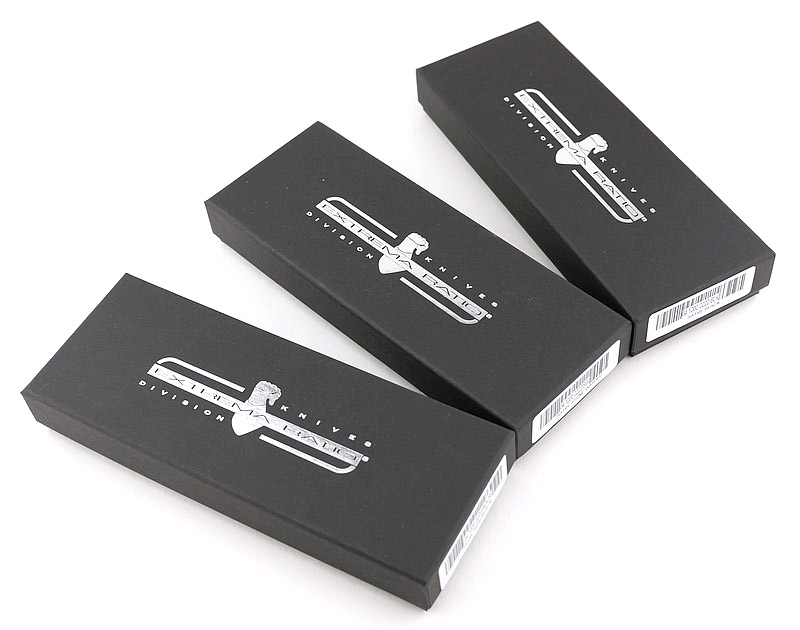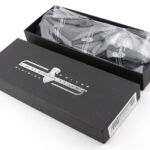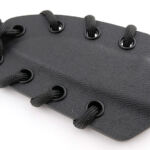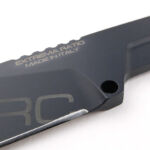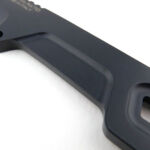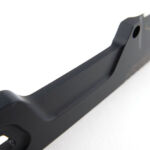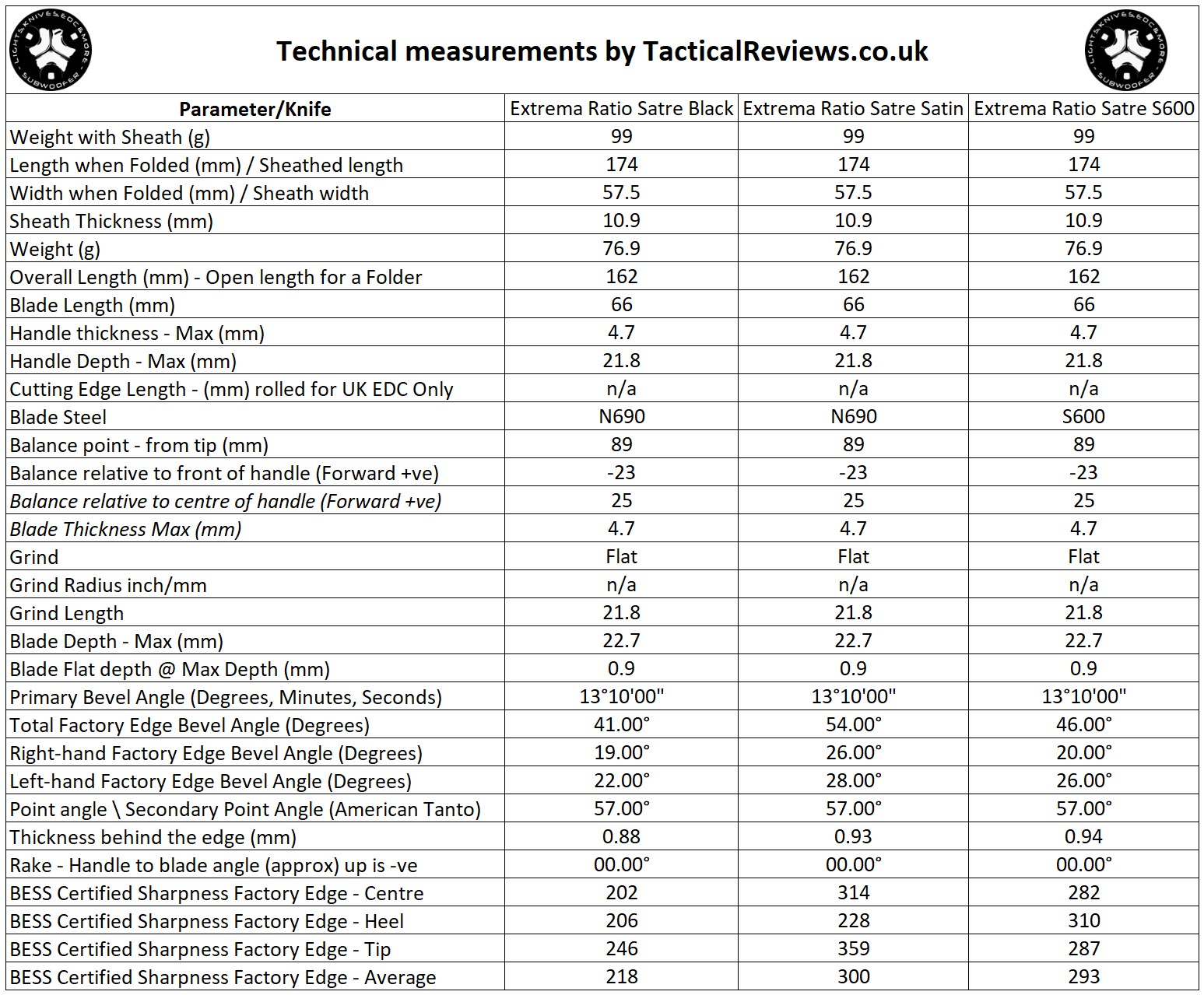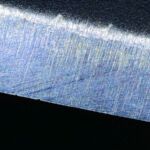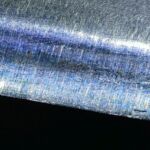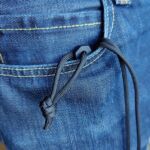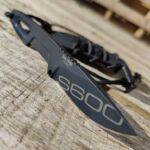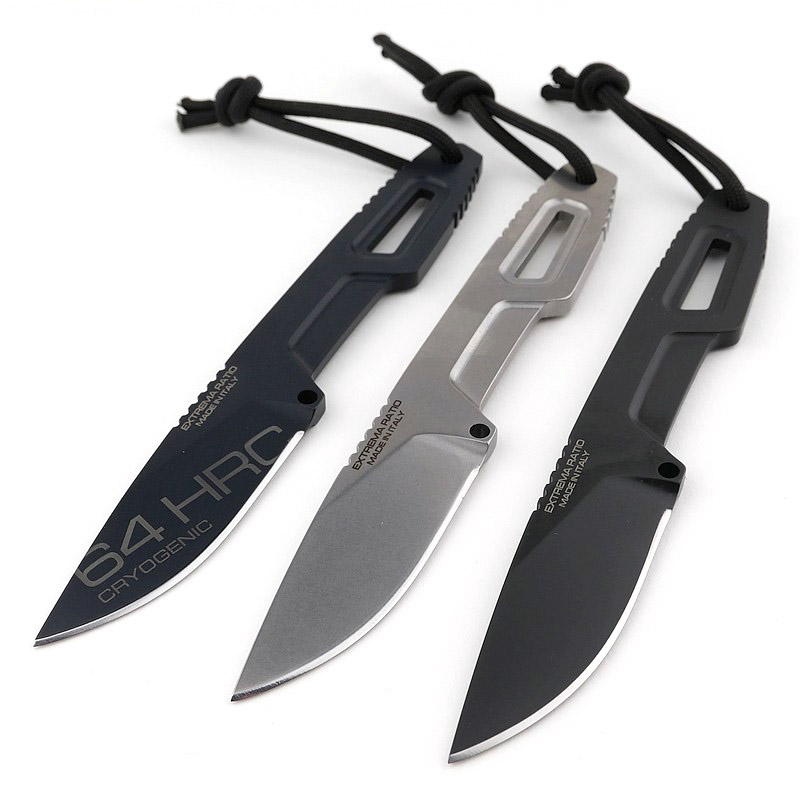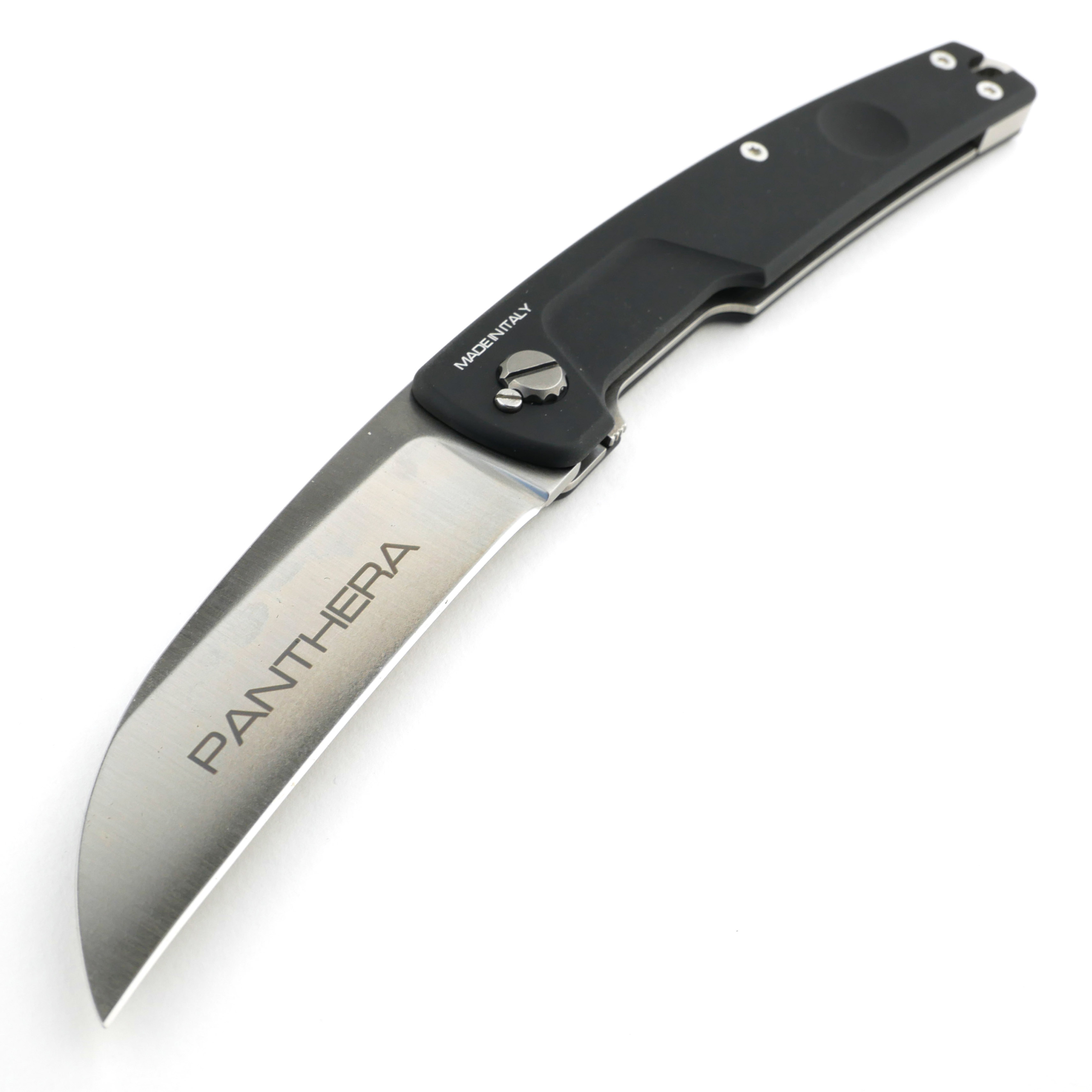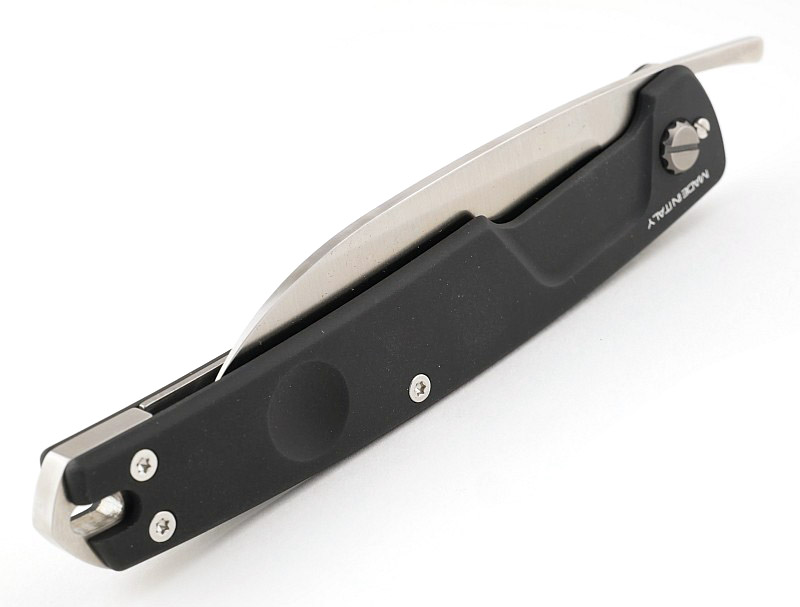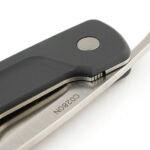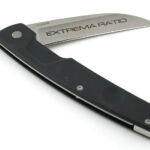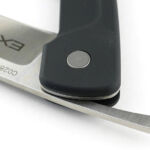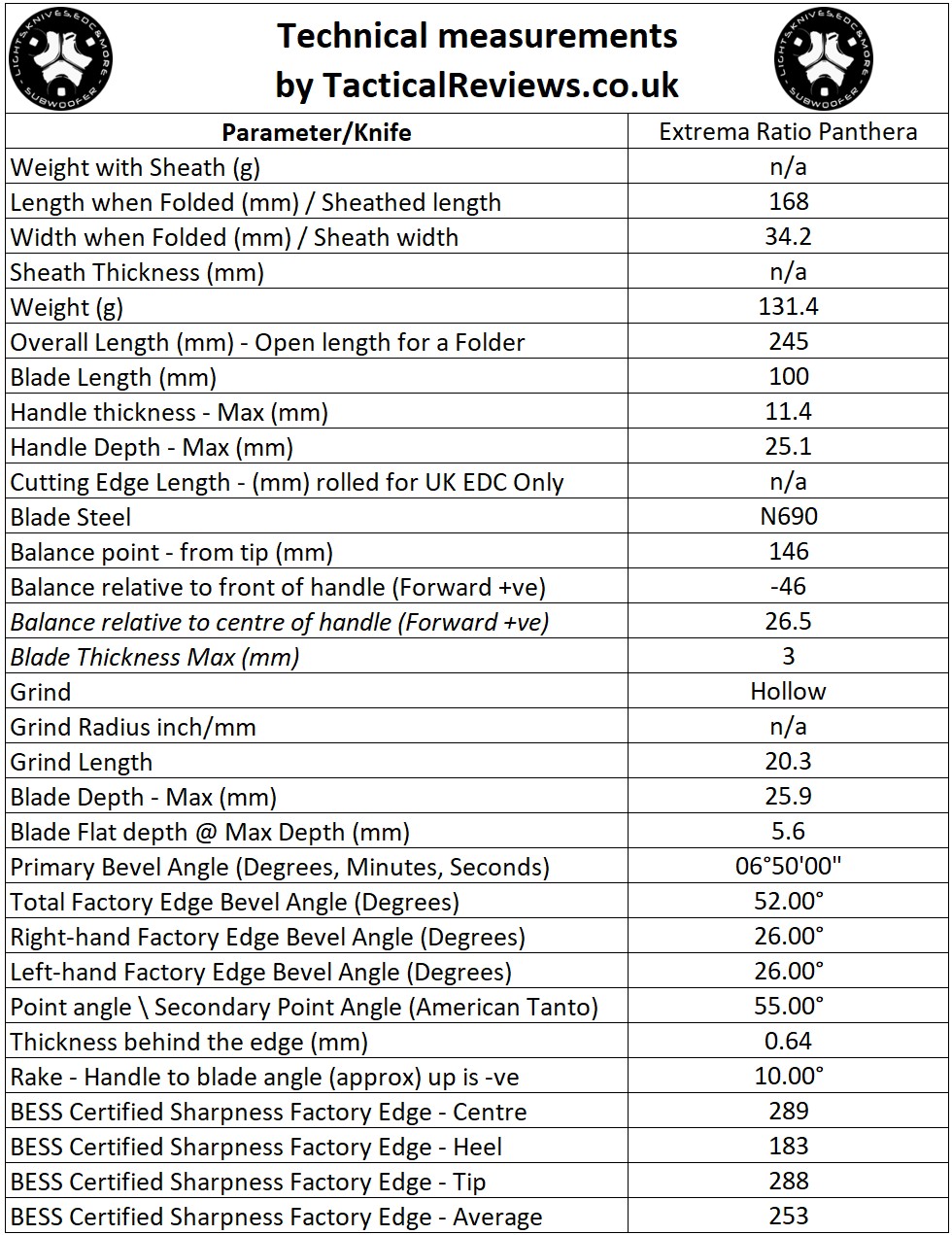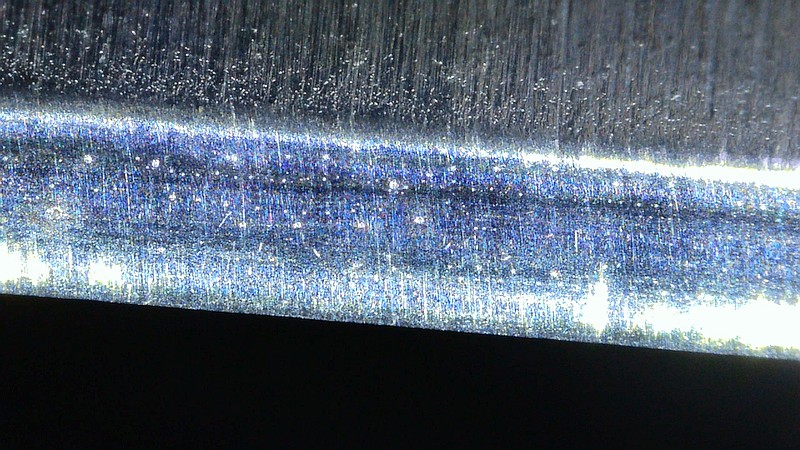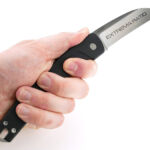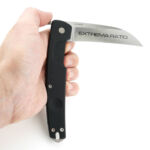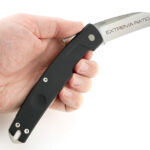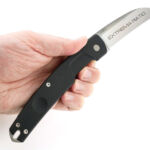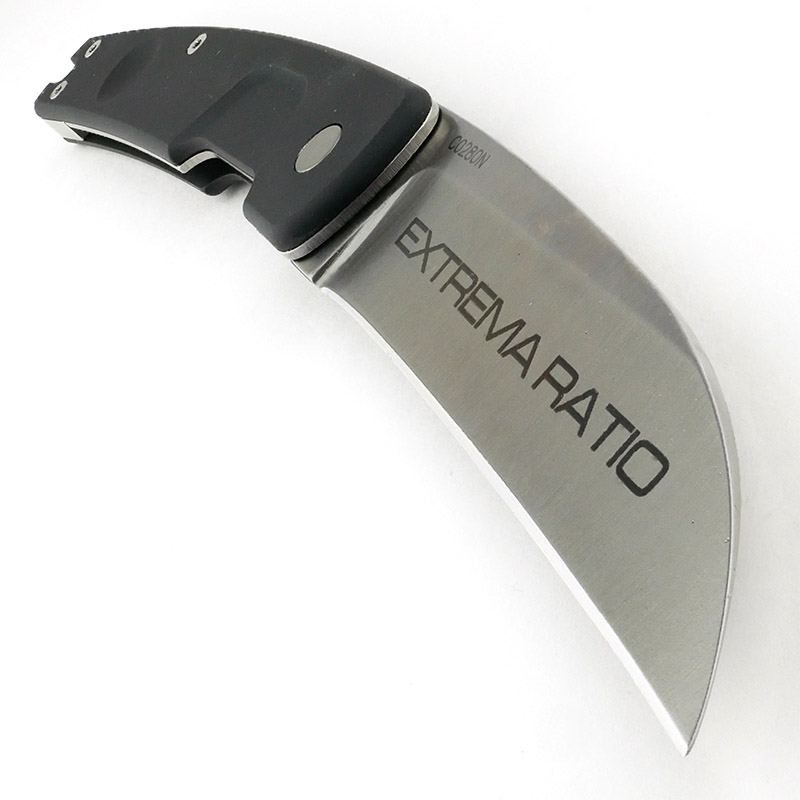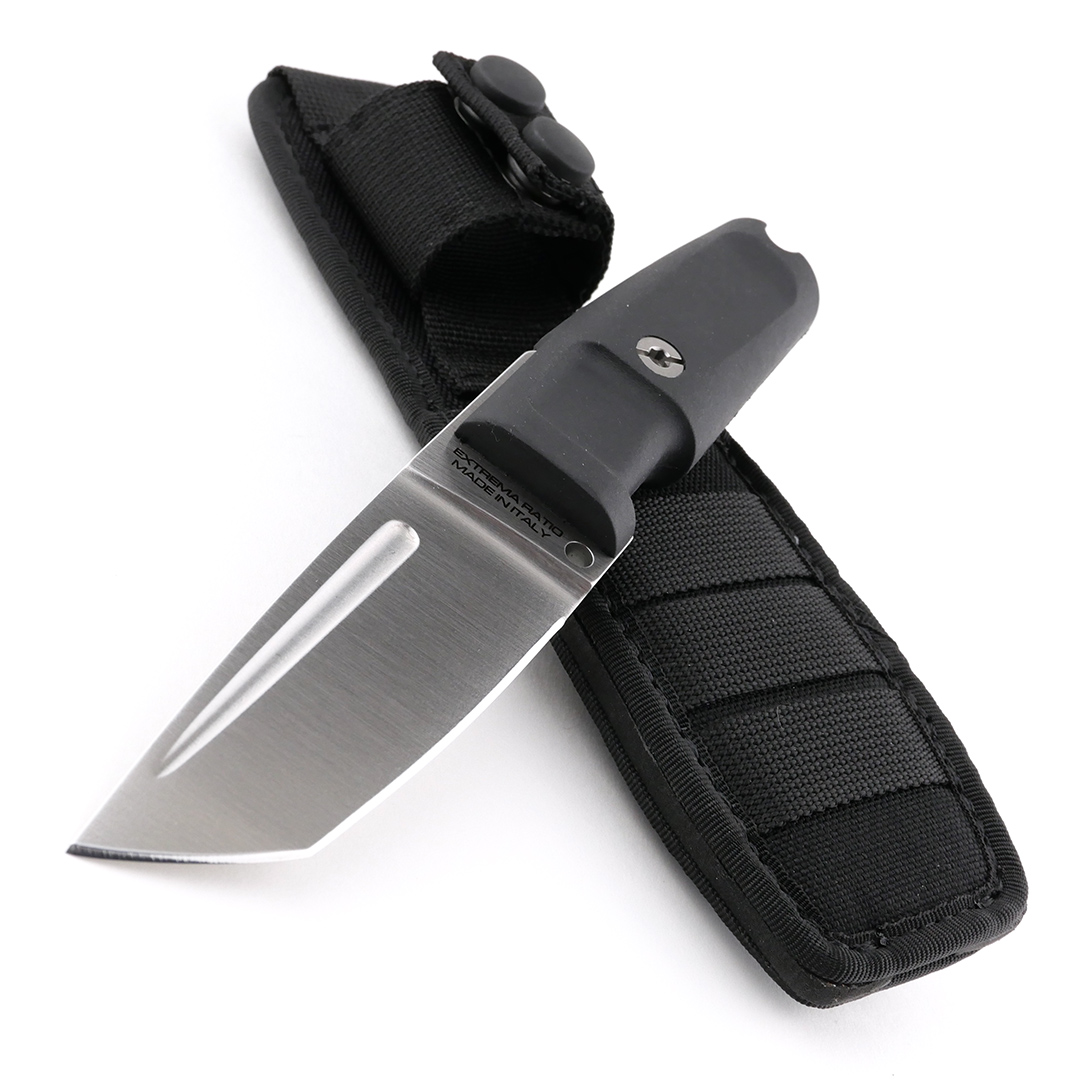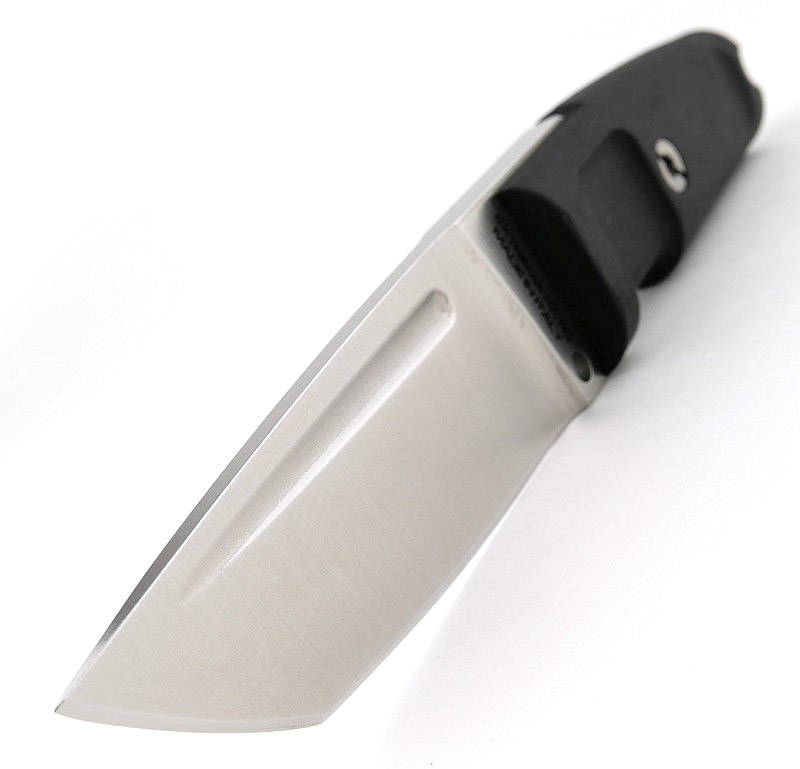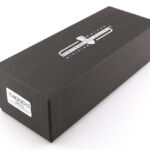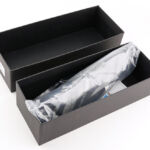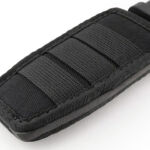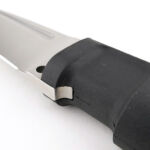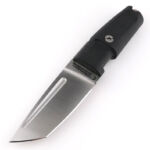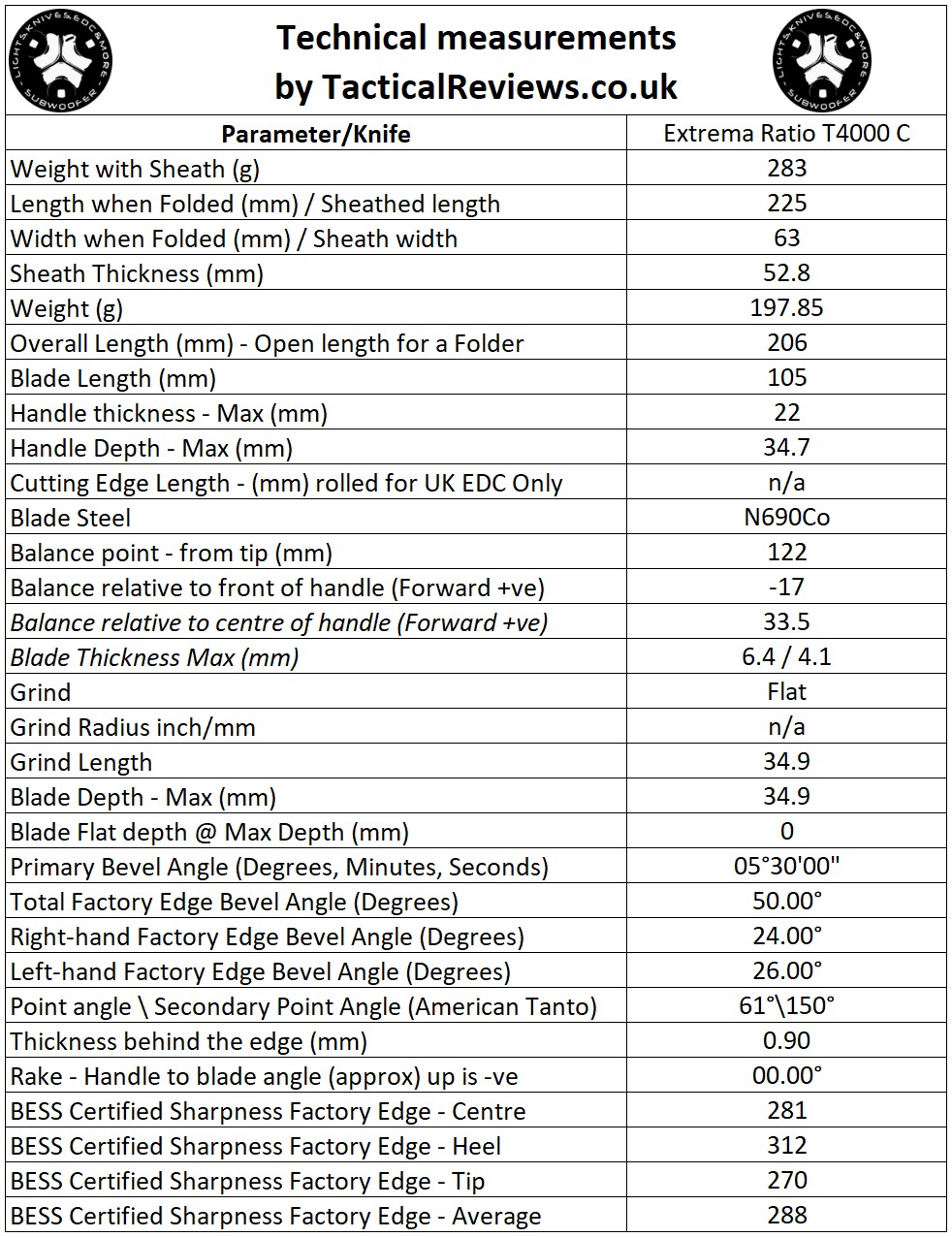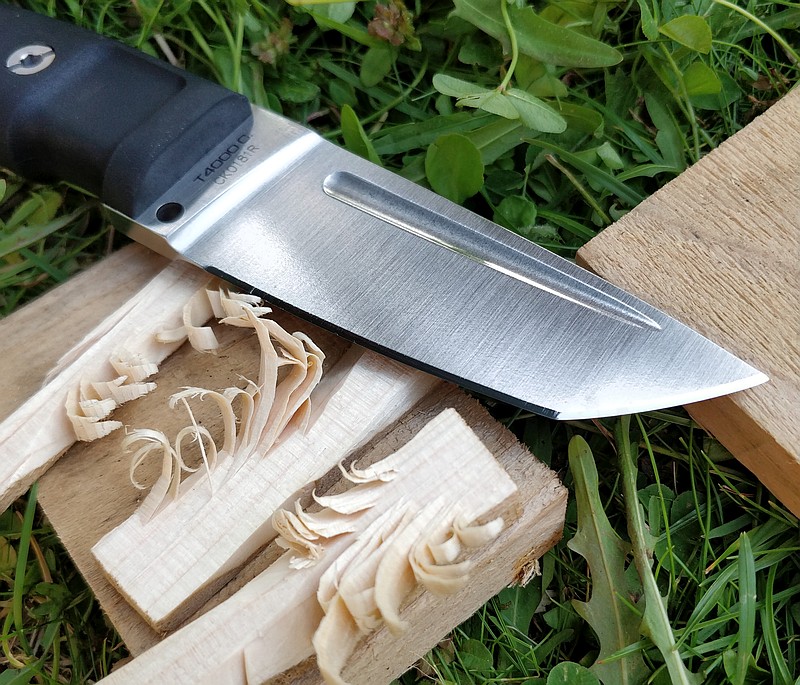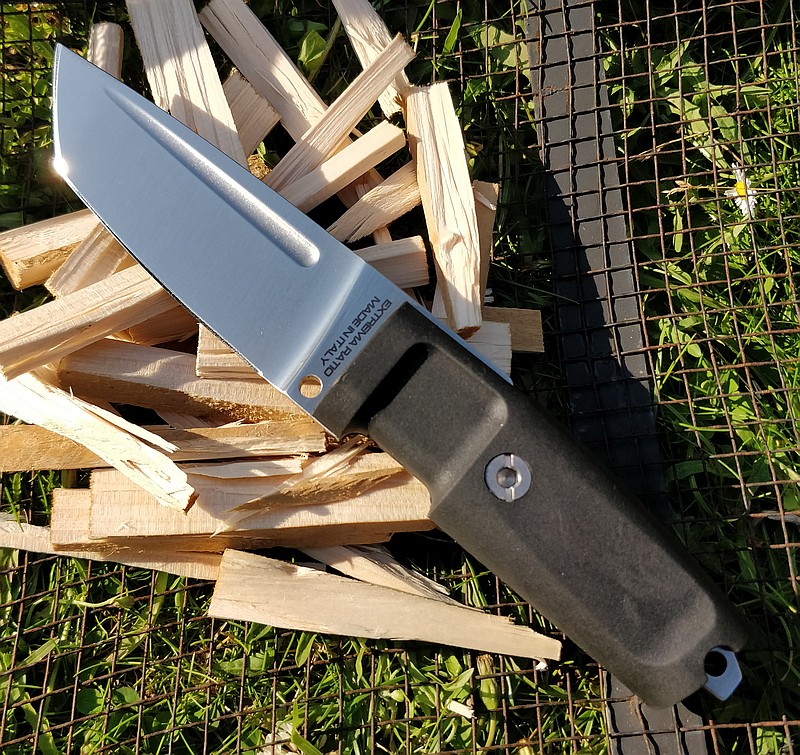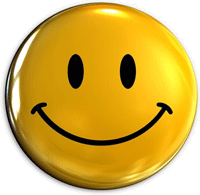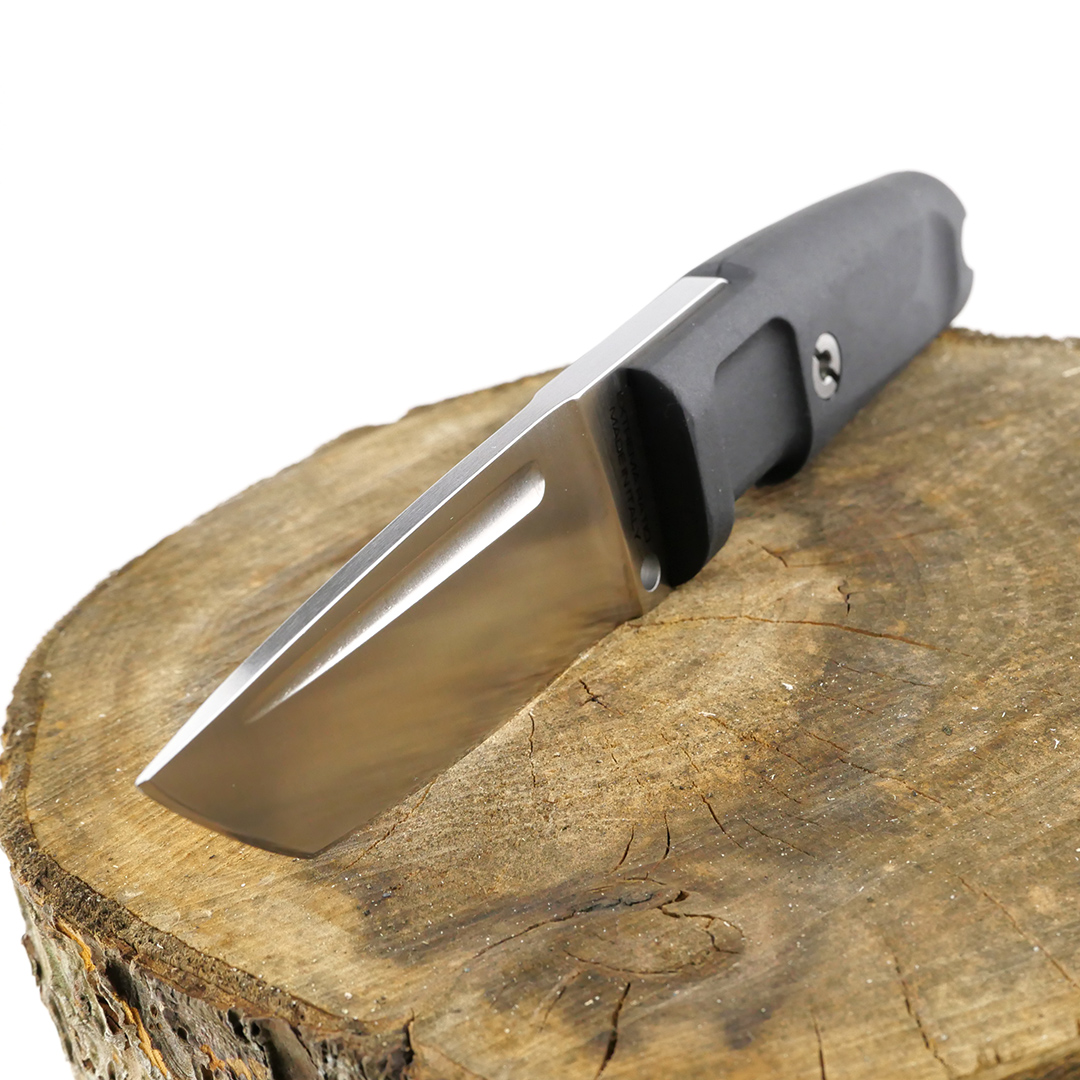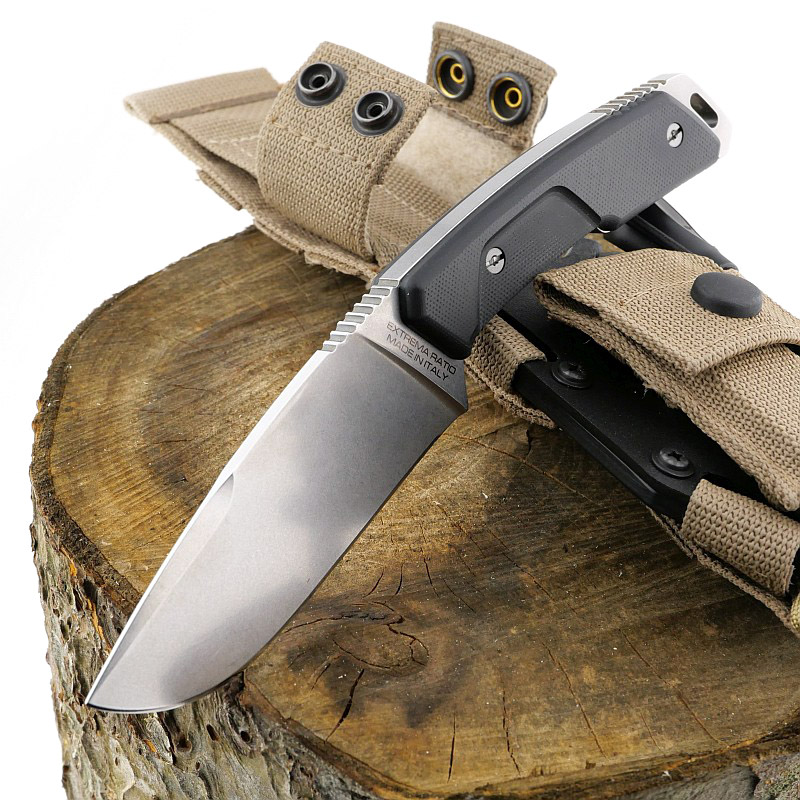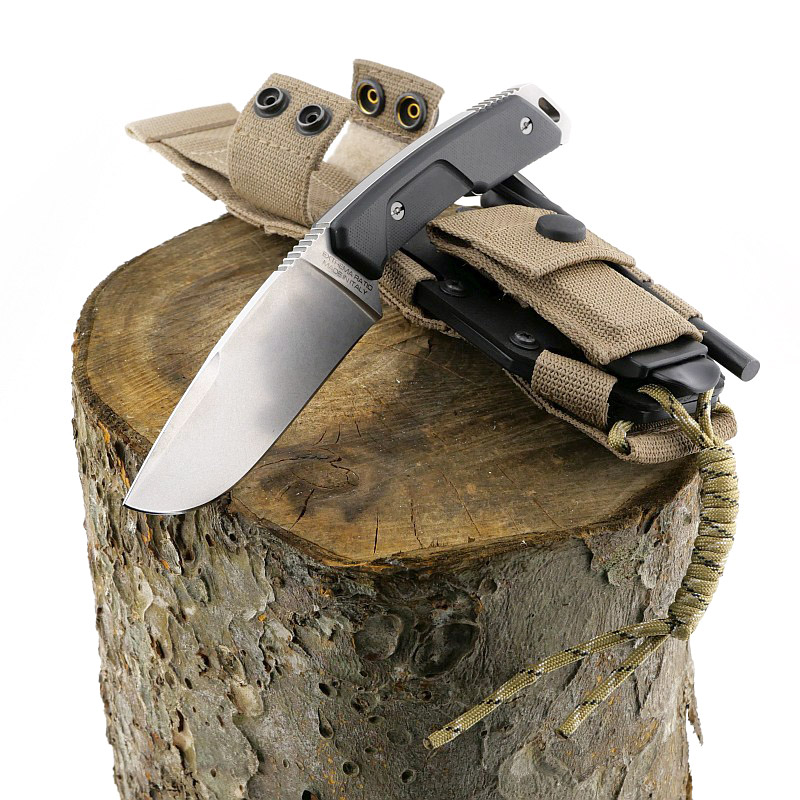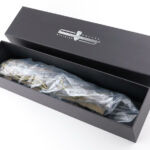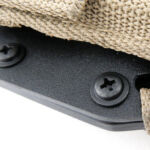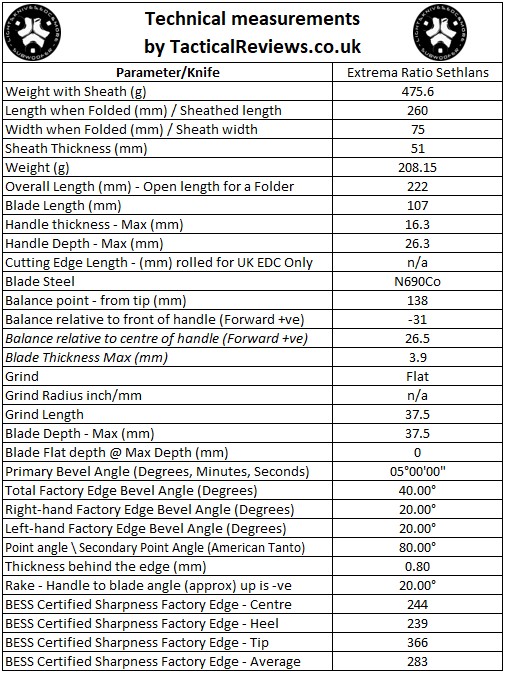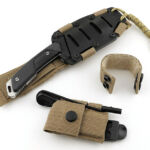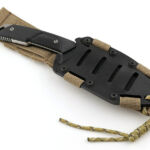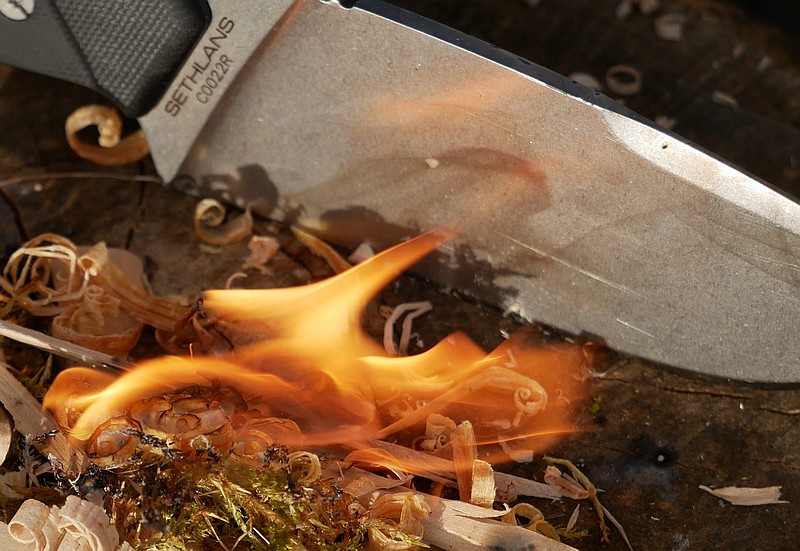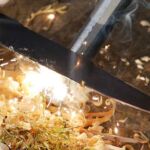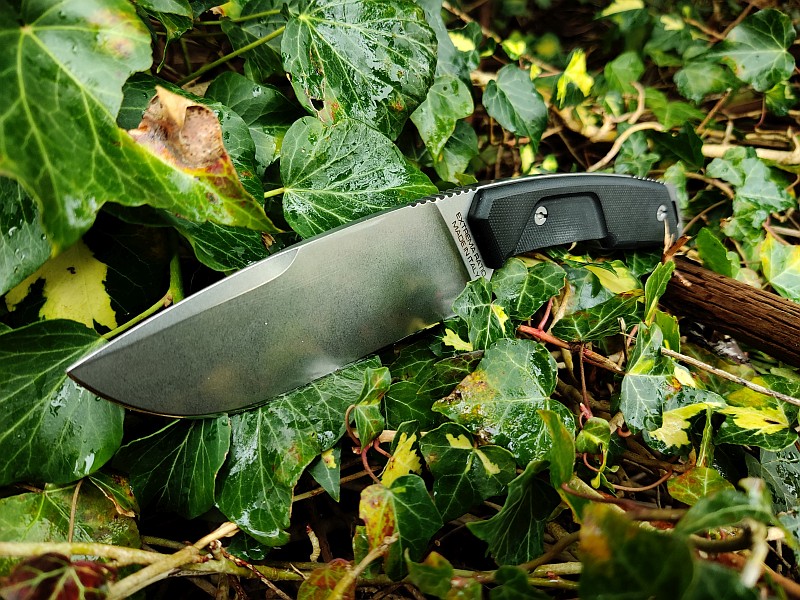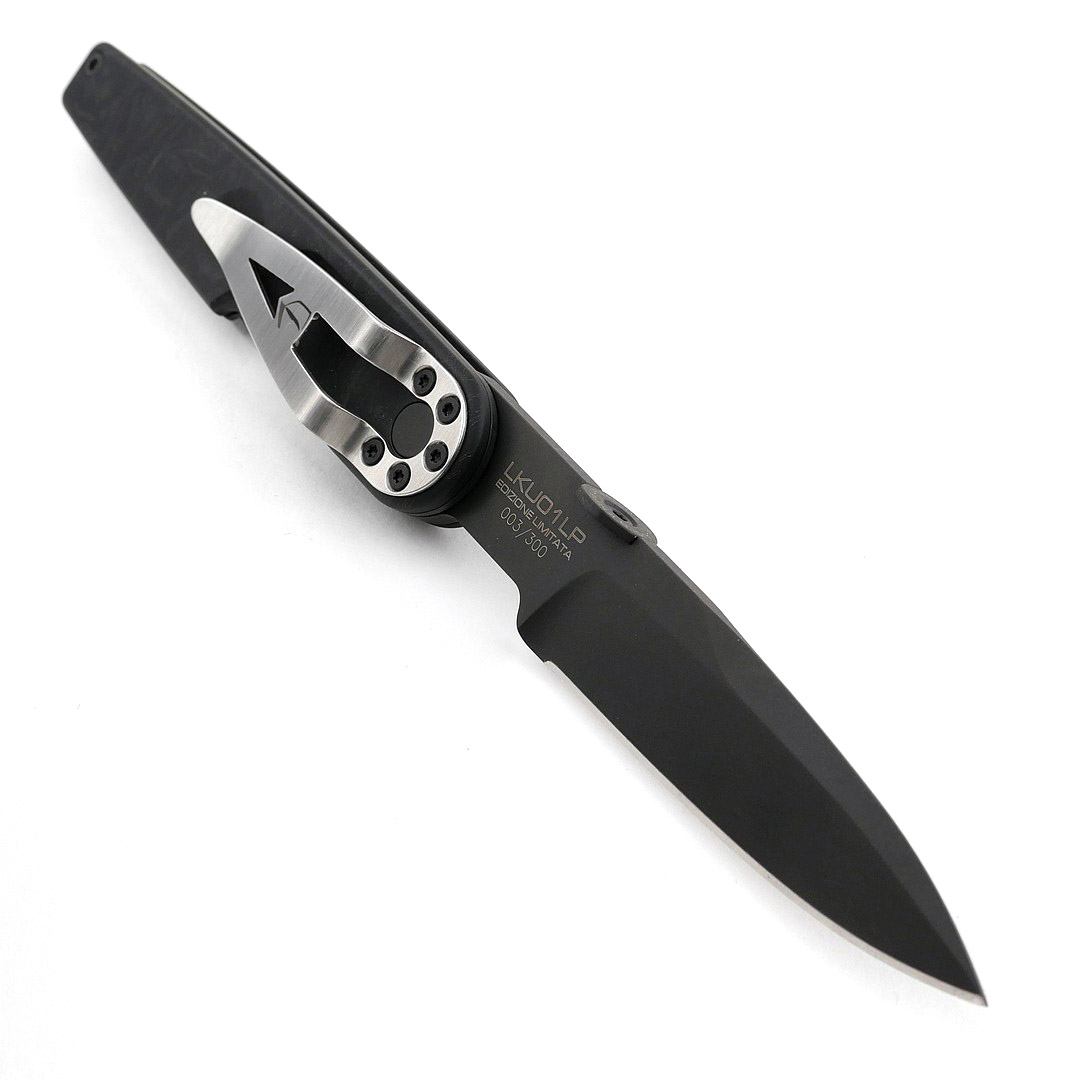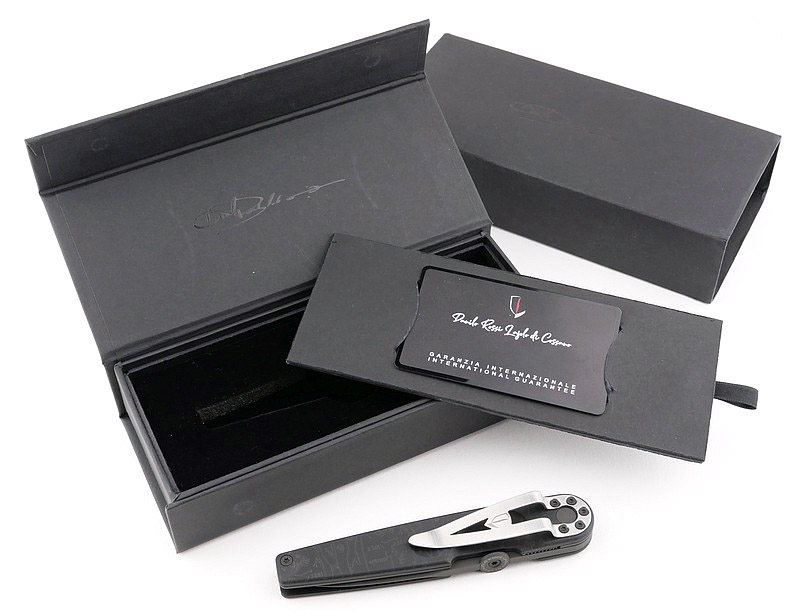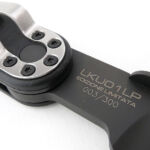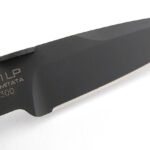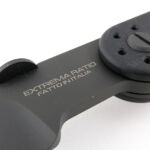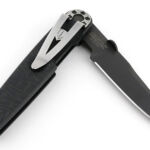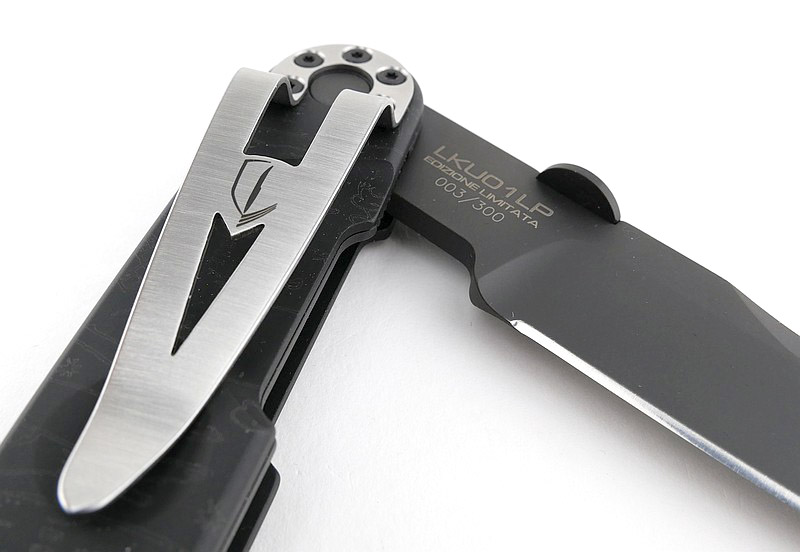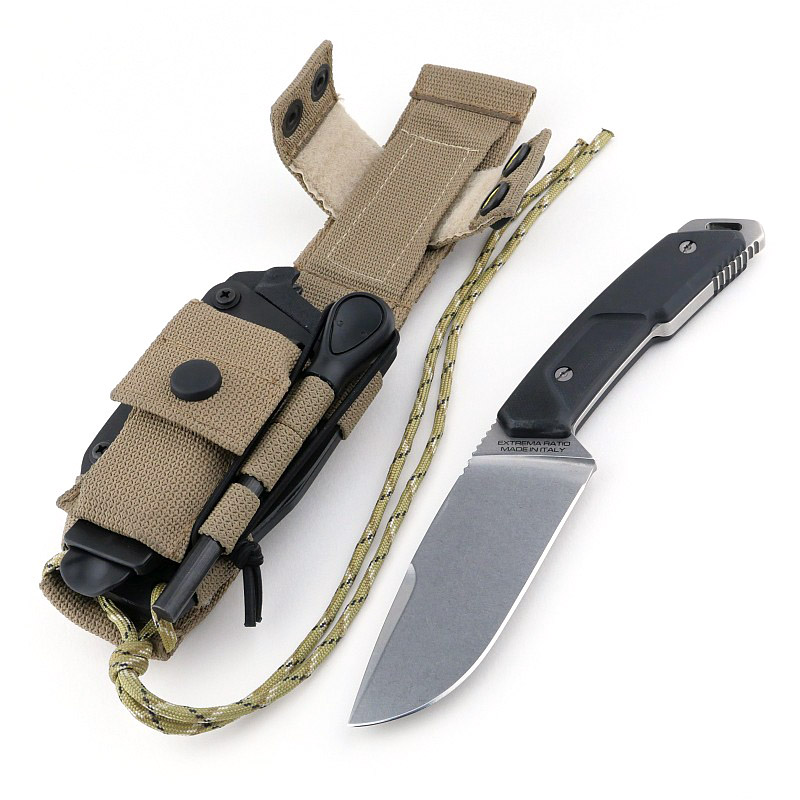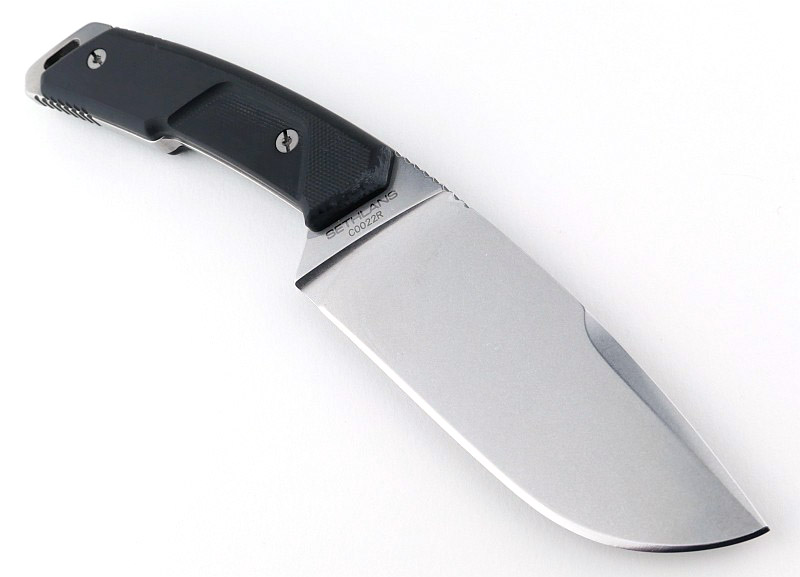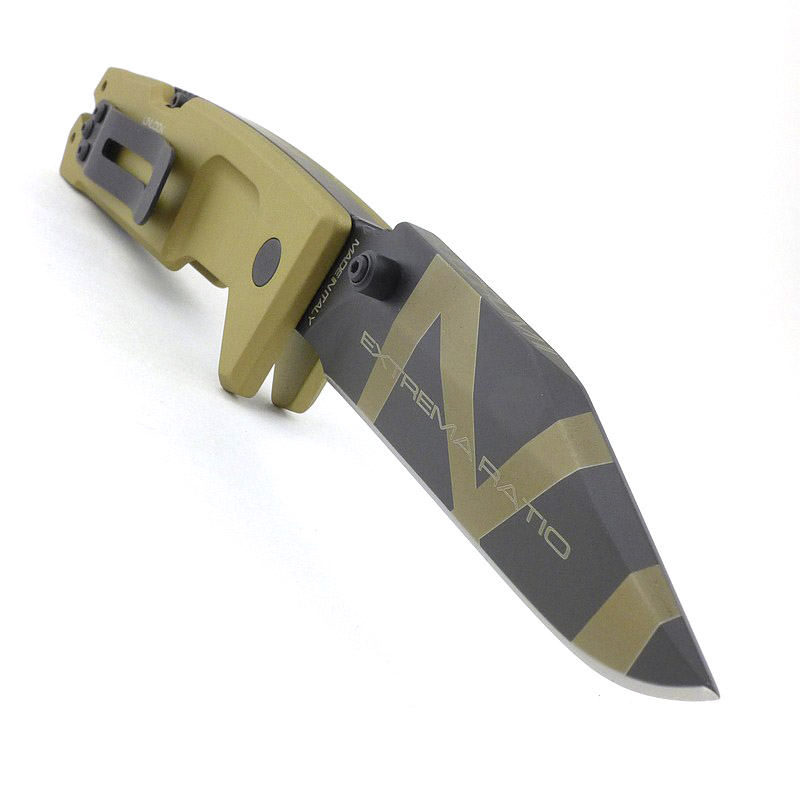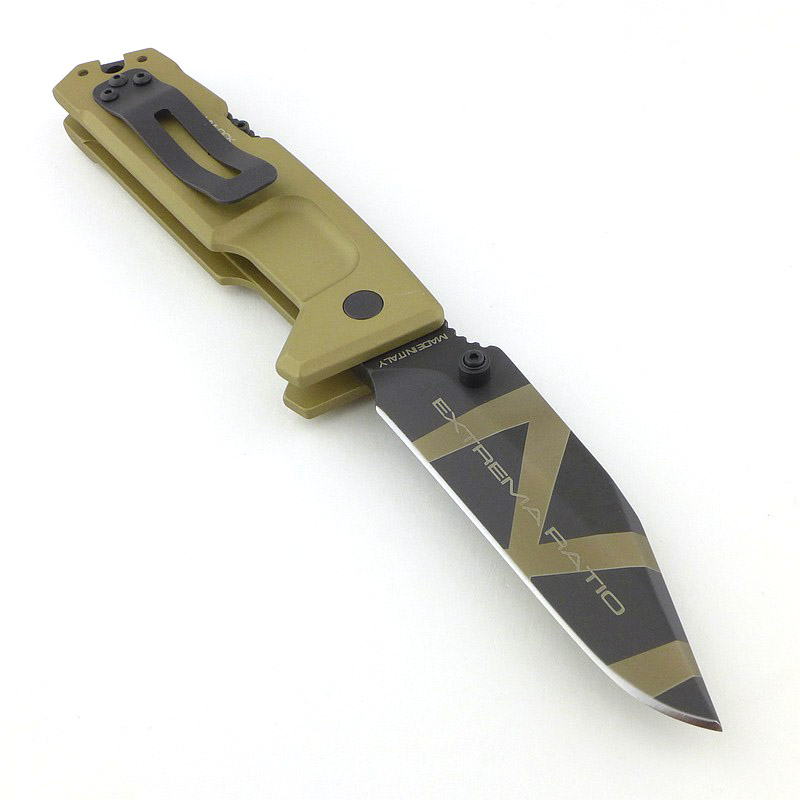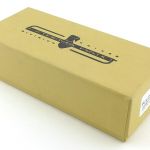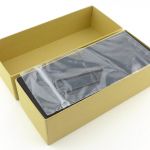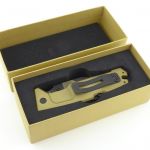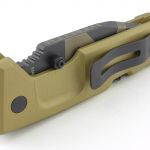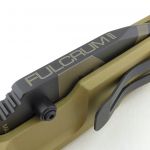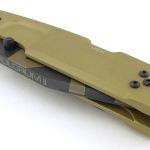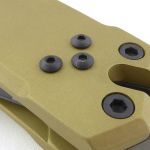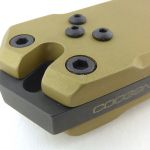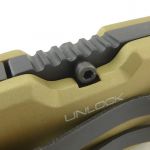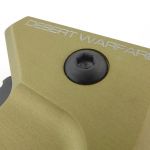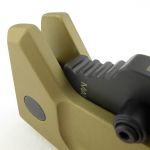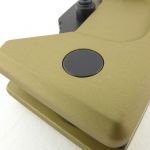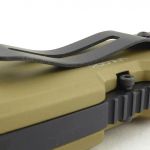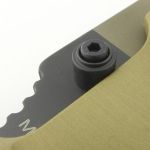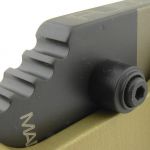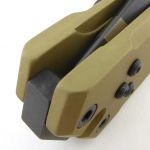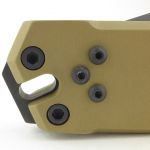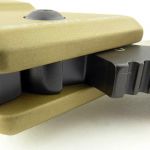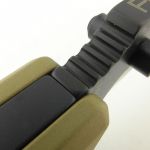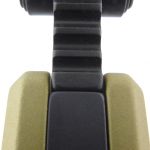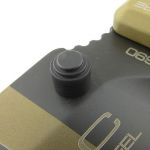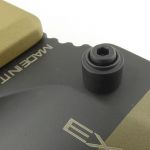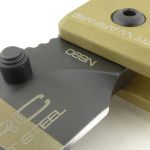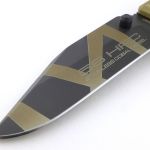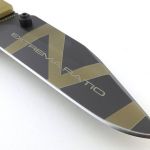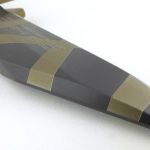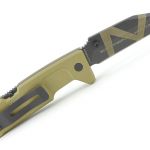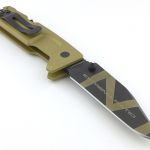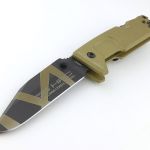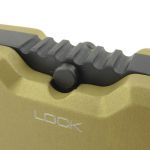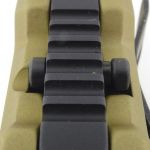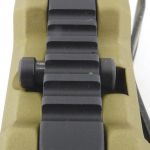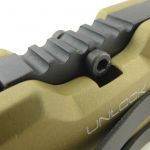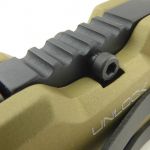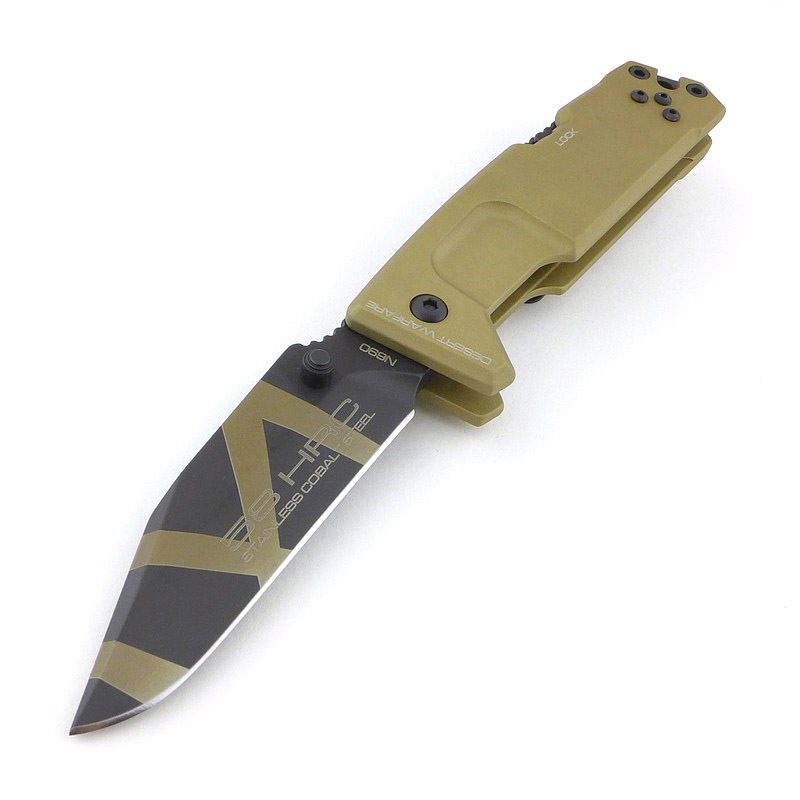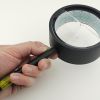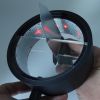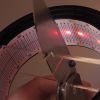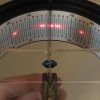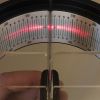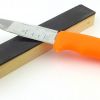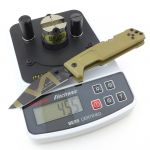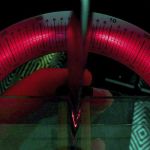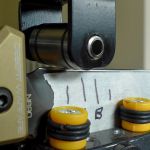Extrema Ratio AMF (Advanced Multi Function) a Detailed Review. My heart skipped a beat when I first saw Extrema Ratio‘s A.M.F. in an exhibition cabinet. Yes, it is a big knife, but it is because its design is inspired by a legendary classic of survival cutlery from the 1980s; and that classic happens to be one of my all time favourite knives! Join me in this Extrema Ratio AMF A.M.F. Review to see how Extrema Ratio have managed to surpass the classic in every way.
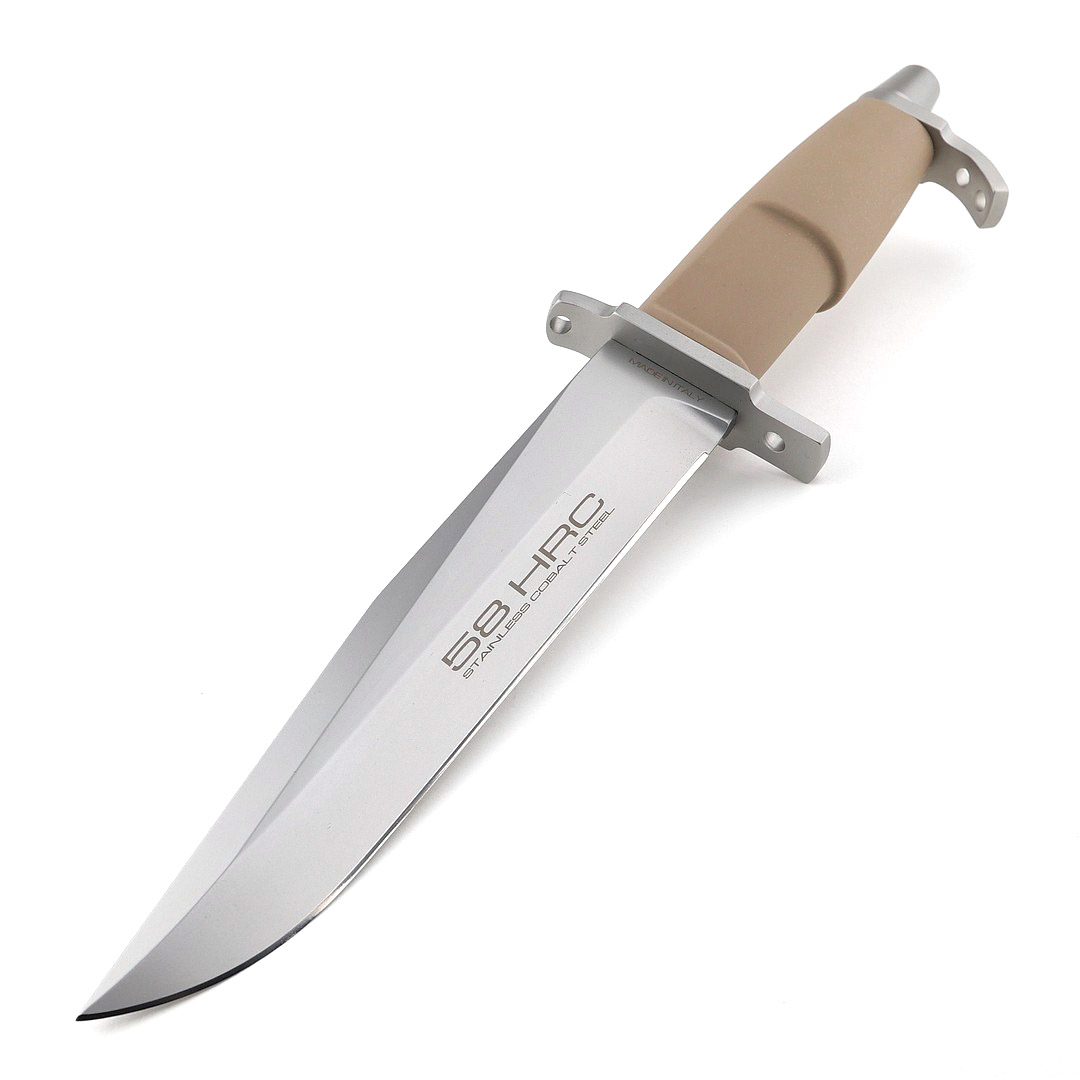
What’s in the box?:
The AMF arrives in a large, robust box, with a QC card. You certainly can’t miss this one!
A good look round the A.M.F.’s Sheath – Things to look out for here are:
Picking up on some of the details from the knife that inspired it, yet also being unmistakably Extrema Ratio. Front and back are well provisioned with webbing, giving you a wide variety of mounting options for both the AMF being mounted, and extras being mounted on the AMF. The leg tie is a nod back to the original sheath design.
On the back of the sheath the AMF comes with three 2M MOLLE systems straps, two of which also act as a belt loop.
Another distinctive feature is the Extrema Ratio removable/reversible/adjustable press-stud retention strap. The main body of the sheath has a tough liner to ensure the long blade stays where it should.
A good look round the A.M.F. – Things to look out for here are:
Just look at the purpose in that design; it is going to get the job done. It may be clearly inspired by the BMF, but Extrema Ratio have taken every aspect of this knife and made it their own. The aluminium guard has lashing points / lanyard holes, and a slight sweep forwards so the thumb can sit on the top guard much more comfortably than a straight guard. With the AMF being easy to strip down completely, this guard is removable as part of the strip down.
The cone shaped butt cap pommel leaves you in no doubt of the direct inspiration of the AMF. Extrema Ratio again making the design their own with the curved butt cap guard that is more usable and more protective than the original.
Completely new is the ability to strip down the knife for a deep clean, and this is achieved via a single hex bolt in the cone shaped butt cap.
For the handle, which on its own, you could recognise as Extrema Ratio thanks to the molded double finger grip, it is again inspired by an innovation of the original in its day (by using the cushioning material DuPont Hypalon for the handle), the AMF has a generous handful of shock absorbing Forprene.
Onto that 206mm long blade with simple clean lines and monster swedge defining its strong look.
The history of the legendary BMF:
This article is an Extrema Ratio AMF review, but I have to include some personal insights as the 1980s classic that is the inspiration for the AMF has been massively influential for me.
From the day I walked to the newsagents to pick up the latest issue of a magazine, it has been waiting 34 years for just this moment!! – A review of the BMF published in January 1991, along with the matching version of the BMF from my collection and Extrema Ratio’s AMF – improved in every aspect.

Some original text from Gerber:
Basic Multi-Function Survival Knife System™
Gerber’s BMF is the latest generation of survival knives. From its conception, the BMF was carefully researched and engineered to be the best survival knife available today.
This tough, heavy duty survival system is designed to withstand heavy use under the most extreme conditions. The 8-inch blade is ground from tough 1/4 inch thick high carbon surgical stainless steel, with Rockwell hardness of c54-55. We have purposely lowered the hardness several points to increase toughness. The chisel tooth saw is the result of countless experiments until we knew it was “just right”. It is designed for aggressive cutting of wood and other materials. The blade and stainless steel guards and but cap are treated with a non-reflective finish. The butt cap is specifically designed to endure heavy pounding, and is firmly attached to the full length blade tang. The most unique feature of the BMF is its revolutionary handle of highly compressed DuPont Hypalon. Hypalon’s semi-soft composition cushions the hand during heavy use, and provides a comfortable positive grip. Each BMF is hand-adjusted so that the point of balance is approximately at the front guard, which makes it comfortable to use, even during extended periods of heavy usage.
As much engineering and designed time went into the BMF sheath as the knife itself. Blackie Collins really “did himself proud” on this one. This sheath is made from black, heavy-duty DuPont Cordura and reinforced to provide protection for both the blade and user. Loaded with features, the sheath is specifically designed as a superior alternative to the hollow handle for carrying life sustaining and support accessories. It is compact and without protrusions to snag on brush or other objects in the field. Engineered to be silent, there are no hard surfaces other than rivets. A pocket at the top the sheath holds a quality, liquid-filled, jeweled compass. Permanently attached to the back of the sheath is a fine grain diamond sharpening hone, which is protected by a nylon cover when not in use. A unique accessory strap on the front of the sheath allows a folding knife sheath, survival, or other equipment to be attached. ALICE clips allow the BMF to be attached to standard issue military battle dress and harnesses. The ALICE clips are removable so that the BMF can be worn on a conventional belt. The BMF can be tied down to the leg or lashed to other equipment with nylon cord supplied with each sheath. (Dated June 1986)
The BMF was first released in January 1986 and discontinued in 1998. During this time it underwent a few changes and had 6 variations manufactured. I have managed to get hold of four of the six types with three pictured alongside the AMF in this gallery. The original 8″ plain, the 8″ saw back, and the 9″ plain version are shown here. The 8″ saw back was the hero-knife in the 1988 film Deadly Pursuit (aka Shoot to Kill).
The Blade and Handle – Detailed Measurements:
For full details of the tests and measurements carried out and an explanation of the results, see the page – Knife Technical Testing – How It’s Done.
The blade is made from N690 steel.
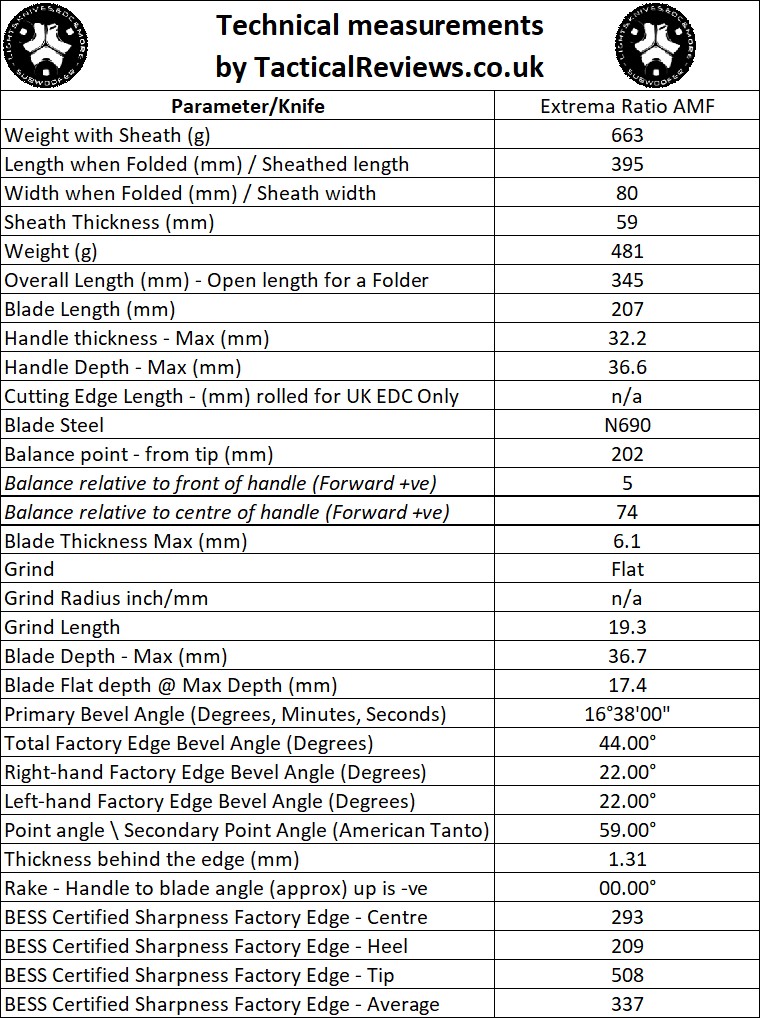
The Factory edge up close:
Followers of Tactical Reviews will know my views on factory edges, but to recap:
Anyone using a knife will need to sharpen it. That first factory edge is just like the first tank of fuel that a new car comes with (or first charge of the battery).
A good factory edge is a ‘nice to have’ but not a ‘make or break’ for a good knife, as you will be putting your own edge onto it soon enough.
The factory edge does however indicate the care a knife maker has put into the final finish.
It is for this reason Tactical Reviews measures factory edge sharpness and specifications, and includes this information in the detailed technical testing.
As a further look at the factory edge, this section has been added to include some high magnification photos of the factory edges.
These are showing a used edge, so the dirt on the edge is NOT from the factory, but from me using it. Also included is a close up of the engraving, just out of interest.
What is it like to use?

The AMF is exactly the handful it is meant to be; Unashamedly big, bold and striking!
For a little perspective, this gallery starts with the AMF blade next to Extrema Ratio’s BF1 CD folder, the overall open length of which is less than just the AMF’s blade. Even with my XL Glove sized hands, the AMF’s handle fills my hand while being super comfortable, and cushioning in hard use.
At 206mm the AMF’s blade is not a full-on chopper, but it is a big knife that is very capable of chopping. The large comfortable, cushioning and secure handle make it so easy to really lay into the chopping task. It found myself easily powering through this pallet chop. Actually you can see how much striking power there is, as the last half of the board was broken before it could be cut.
A dry oak branch happened to be to hand; again thanks to the firm grip, this hard wood shaved easily and smoothly, submitting to the AMF’s blade with minimal effort.
Though it is a large knife with a large sheath, Extrema Ratio have improved every aspect of the knife that inspired the AMF, making it really worth carrying. The action of sheathing and unsheathing is easier and better, and the sheath is simpler and lighter (the original had a metal belt hanger and diamond sharpener on the back, plus permanent pouch). You have webbing so you can carry more on the sheath if you want, but you are not forced to.
AMF’s hand filling handle is so comfortable, and when chopping there is no shock transferred to your hand, making it feel effortless. And still Extrema Ratio managed to give it their distinctive style.
As Extrema Ratio’s main choice of steel, N690 massively upgrades the original 440-A, in hardness, toughness and corrosion resistance. The BMF is notorious for rusting badly, mainly from its blasted surface (re-finished blades appear much less prone to rusting). The N690 used in the AMF is in a different league. Obviously I can’t replicate 40 years of storage for the AMF, but I am highly confident this will never be an issue for the AMF.
Extrema Ratio’s reinterpretation of the guards, make them so much more functional. The rear guard, by curving round the fingers, makes it much more protective, and also keeps it out of the way when using the knife; a small change and a massive improvement. The front guard, being slightly shorter and pushed forward allows the thumb to be able to push on it. The lower part of the front guard protrudes slightly further to enhance the protection it provides.
None of the long spine or swedge is sharpened for fire steel scraping, but I’m fine with that. As it is, it has a more genuine feel of the classic that inspired it, and you are better off having a small scraper with any firesteel you choose to carry.
Maybe it is that wide comfortable handle, but somehow Extrema Ratio have managed to make this large knife not feel that large in the hand. It handles much better than it should and feels easier to use than knives this size tend to feel.
Though I didn’t get it dirty enough to justify a strip down, I wanted to see how Extrema Ratio had approached this. The original does not take down, so this is a new feature. A single hex bolt in the cone shaped butt cap releases everything. First the cone coming off, then the rear guard, that fits closely enough it doesn’t just fall off. When slipping off the handle this then reveals the use of a specially shaped captive nut in the end of the tang which gives several benefits. Firstly it spreads the load of the butt cap bolt, it also allows a different metal to be used for the threads than is used for the blade tang, and lastly it brings in some ‘compliance’ when tightening the butt cap bolt so all the parts can find the best contact points and settle firmly, making it more secure and less likely to loosen. A nice detail you won’t see unless you strip the knife down, so I’ve done it for you.
Even if you don’t have that connection to the classic 80s knife like I do, the AMF stands on its own feet and is just a great knife.
Extrema Ratio AMF Review Summary
The views expressed in this summary table are from the point of view of the reviewer’s personal use. I am not a member of the armed forces and cannot comment on its use beyond a cutting tool or field/hunting knife.
Something that might be a ‘pro’ for one user can be a ‘con’ for another, so the comments are categorised based on my requirements. You should consider all points and if they could be beneficial to you.
_______________________________________________
What doesn’t work so well for me
_______________________________________________
The handle might be too large for some people.
The 2M MOLLE straps don’t feel in keeping with the AMF’s quality.
_______________________________________________
Things I like
_______________________________________________
A Classic Reborn!
Improved in every way over the original.
Unmistakably Extrema Ratio.
Strips down for cleaning.
Ultra-comfortable handle.
Shock absorbing grip (especially when chopping).
N690 steel.
Captive tang nut.
Great protection from forward and rear finger guards.
A BIG knife (always makes you smile).
Highly versatile sheath mounting.
Everything else about it!
Review Videos
Starting with a short format sixty second review:
Onto a full video review covering many more details:
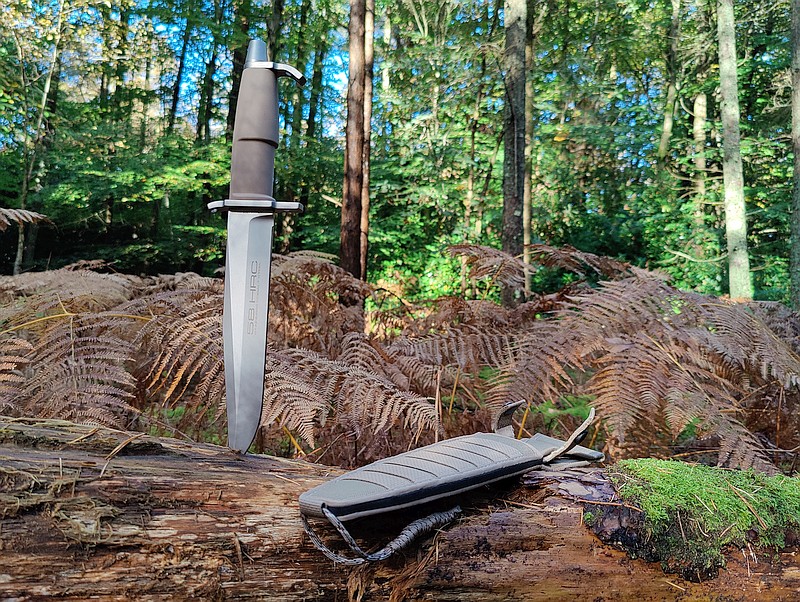
Discussing the Review:
Something new – will it work? A Tactical Reviews Subreddit.
TacticalReviewsChat on Reddit
Please visit there and start/join the conversation.

